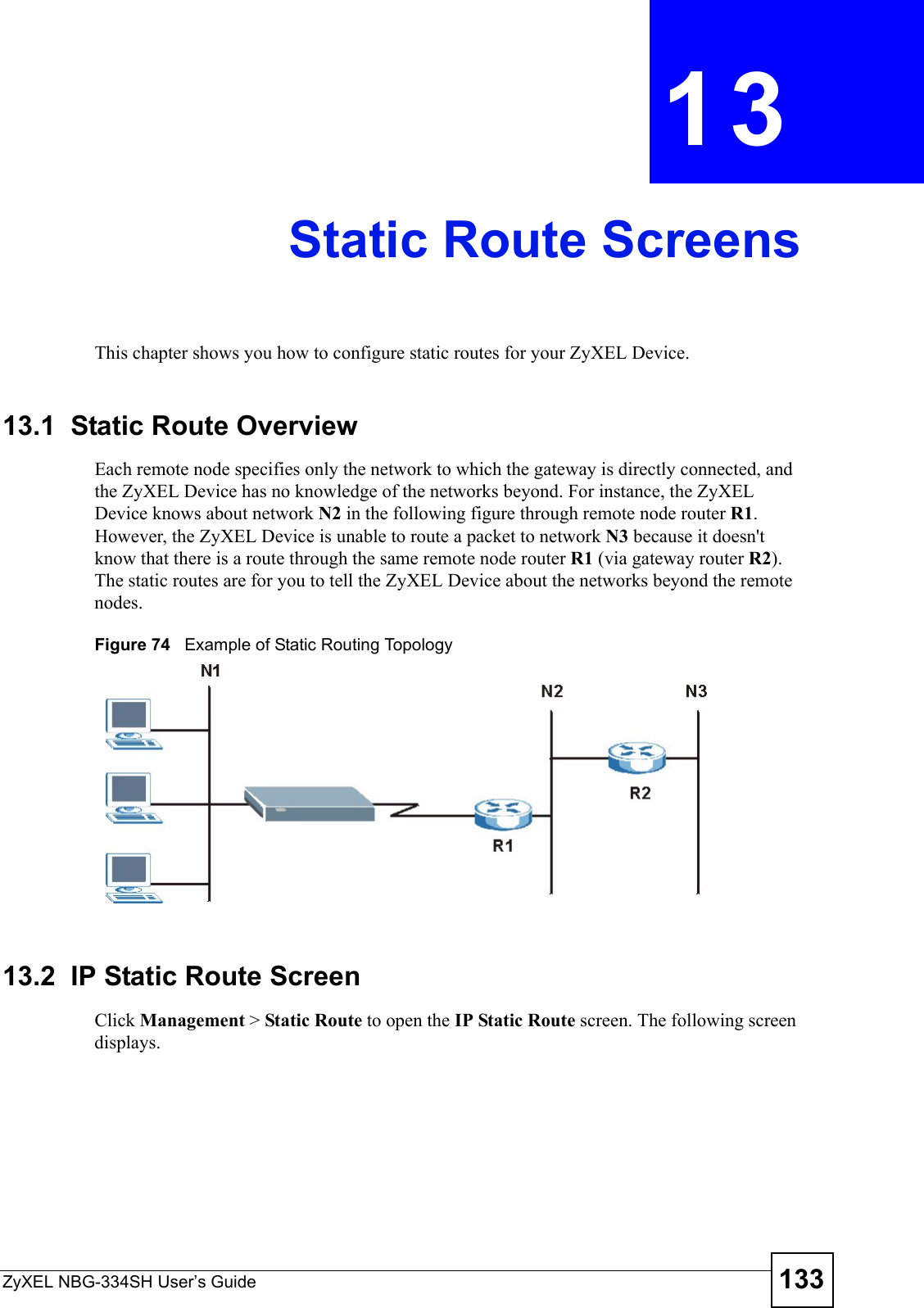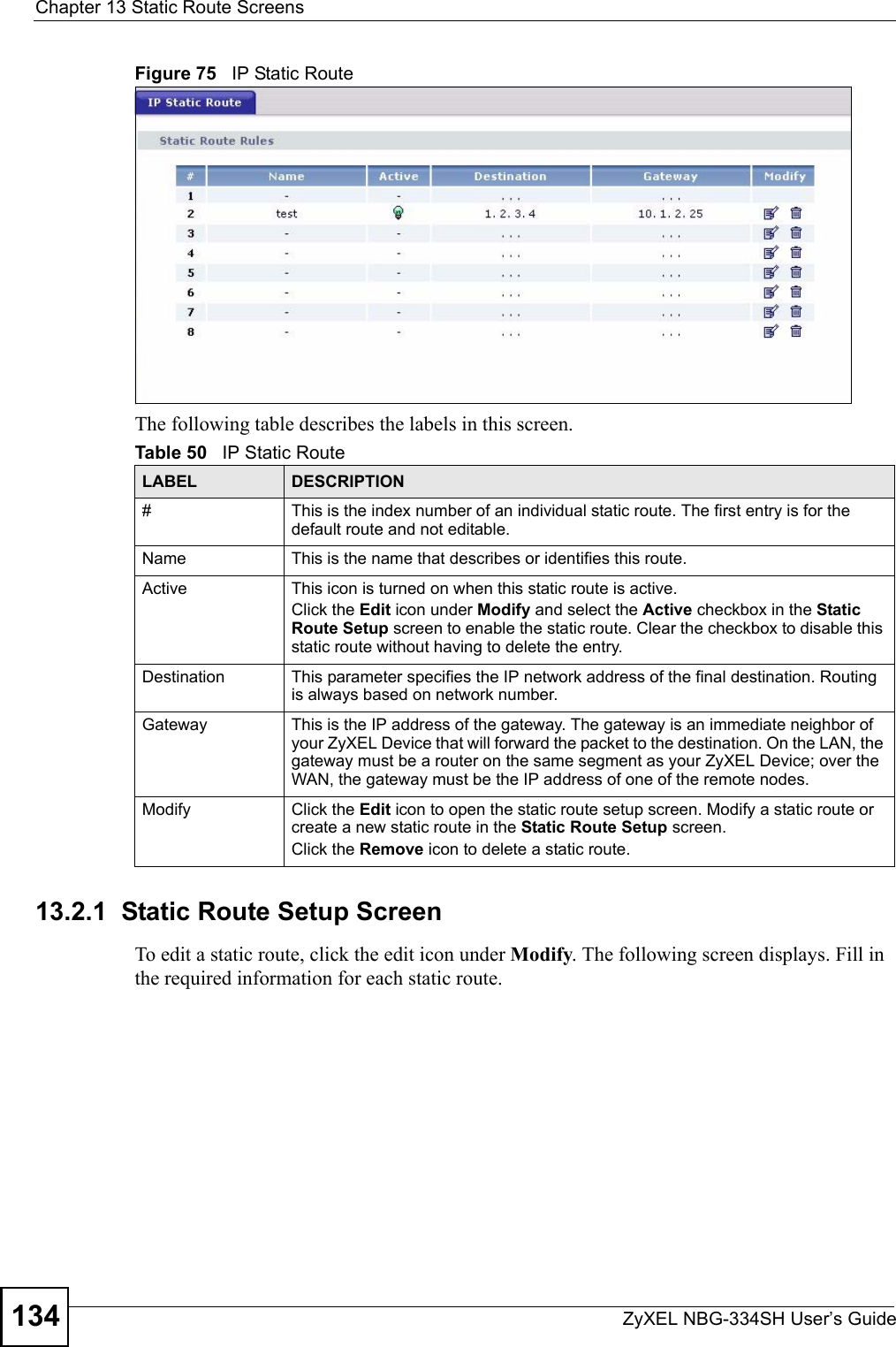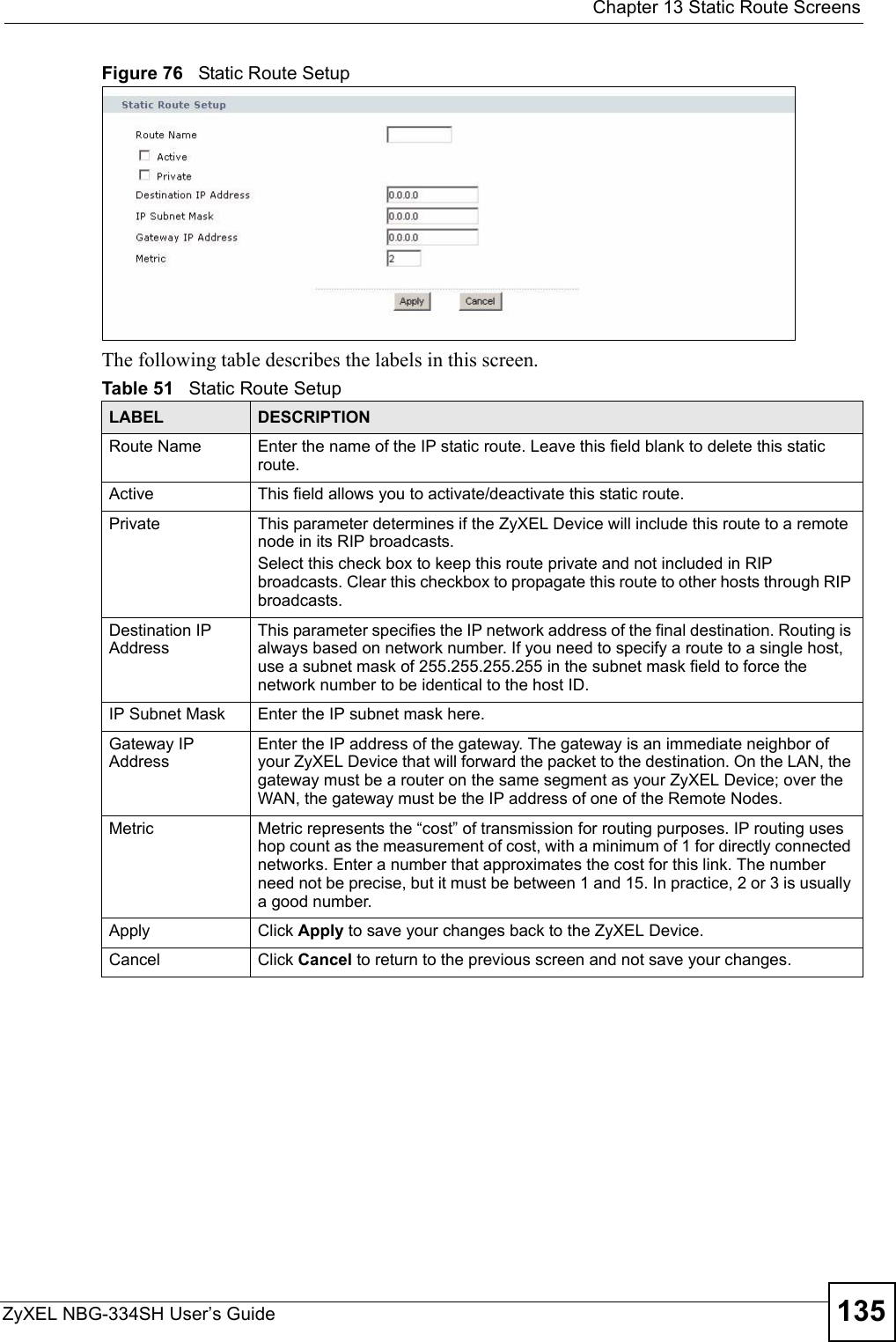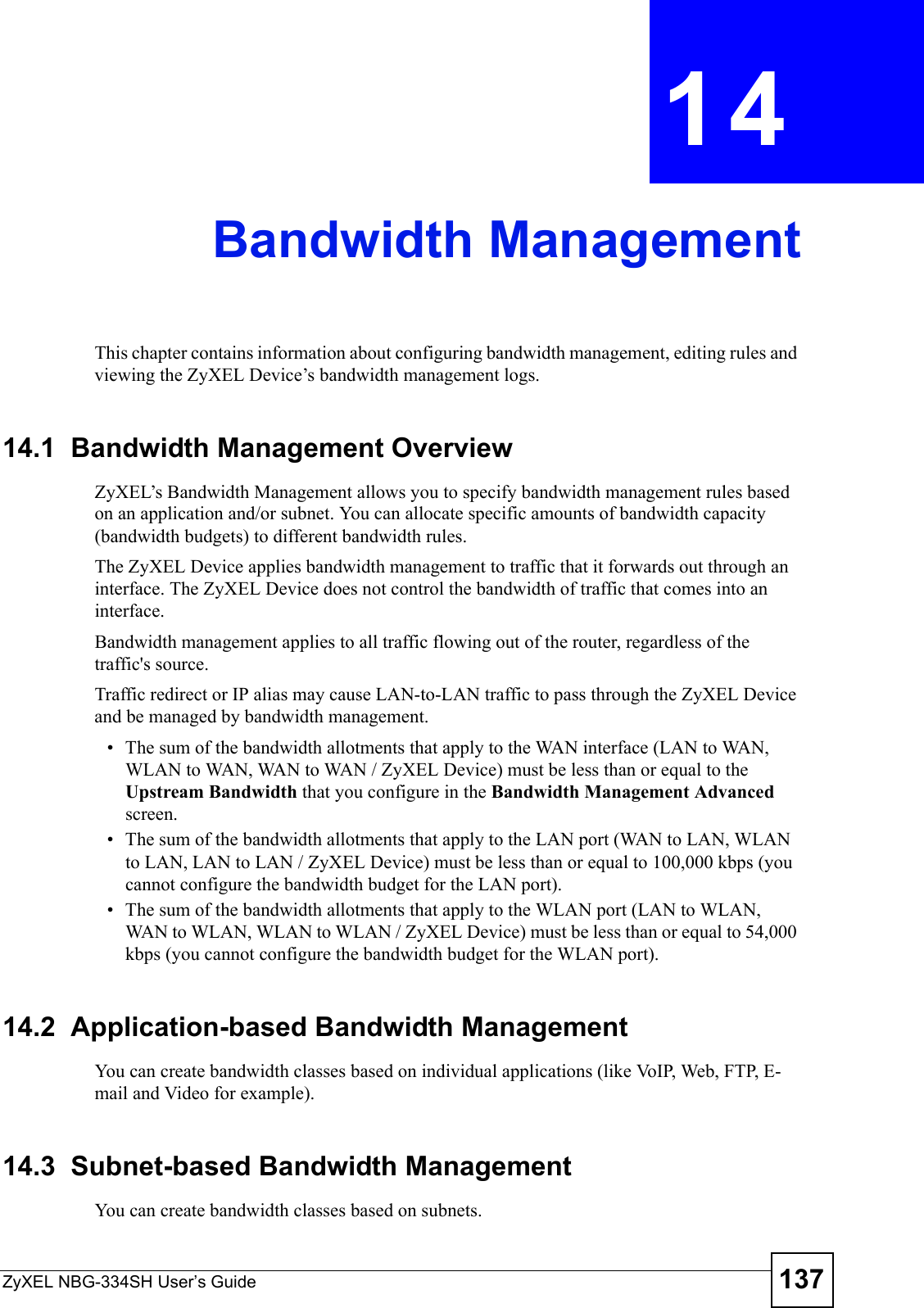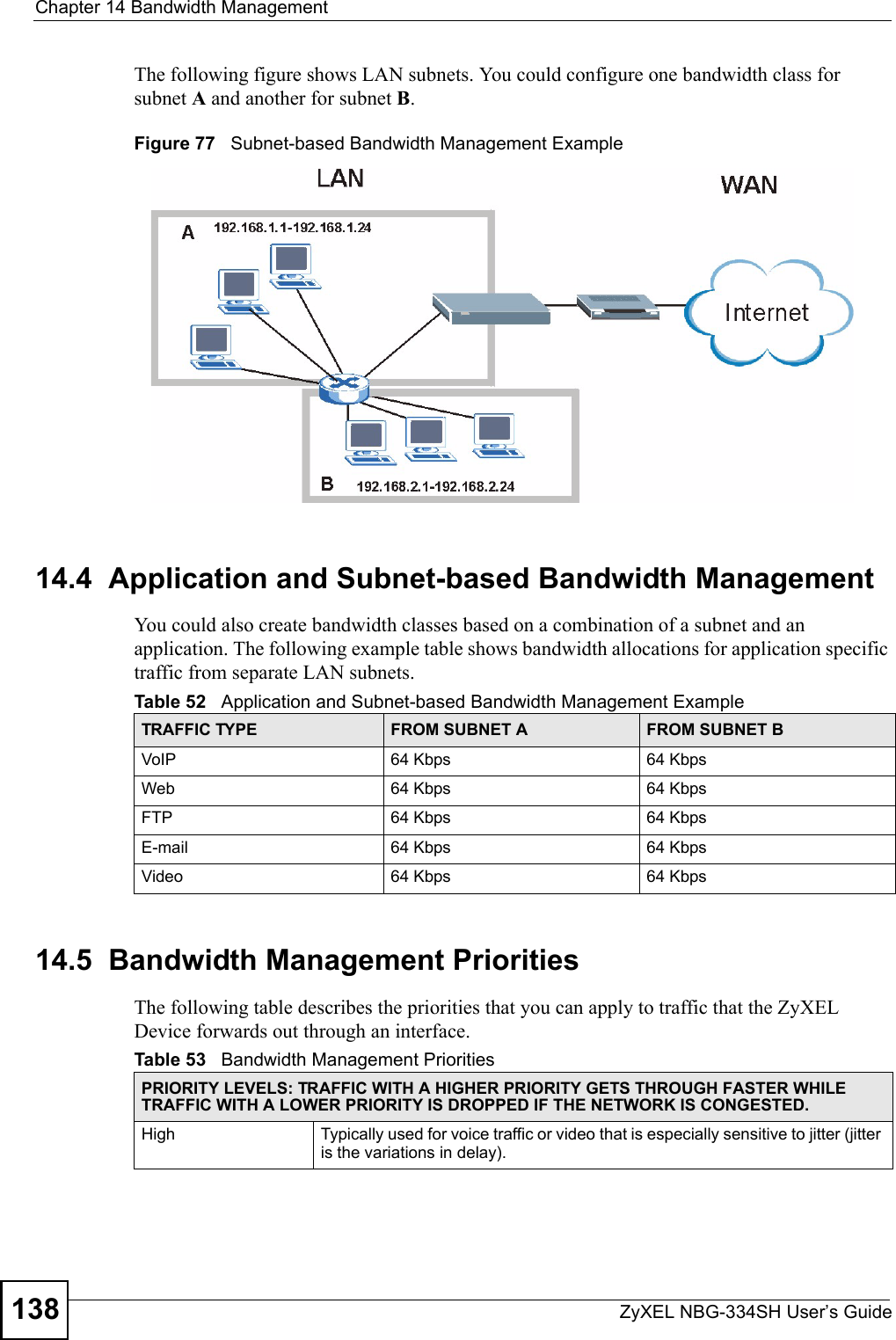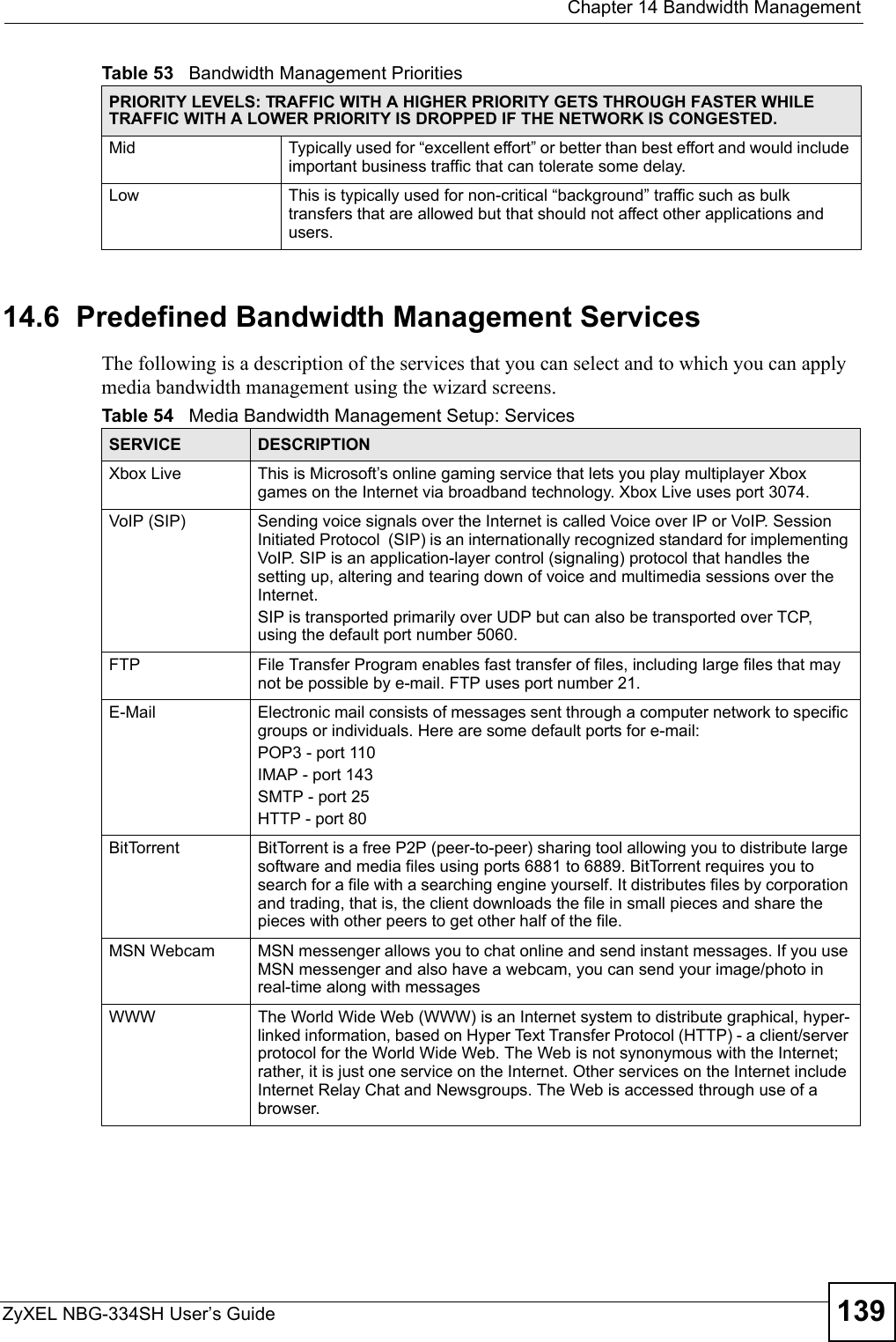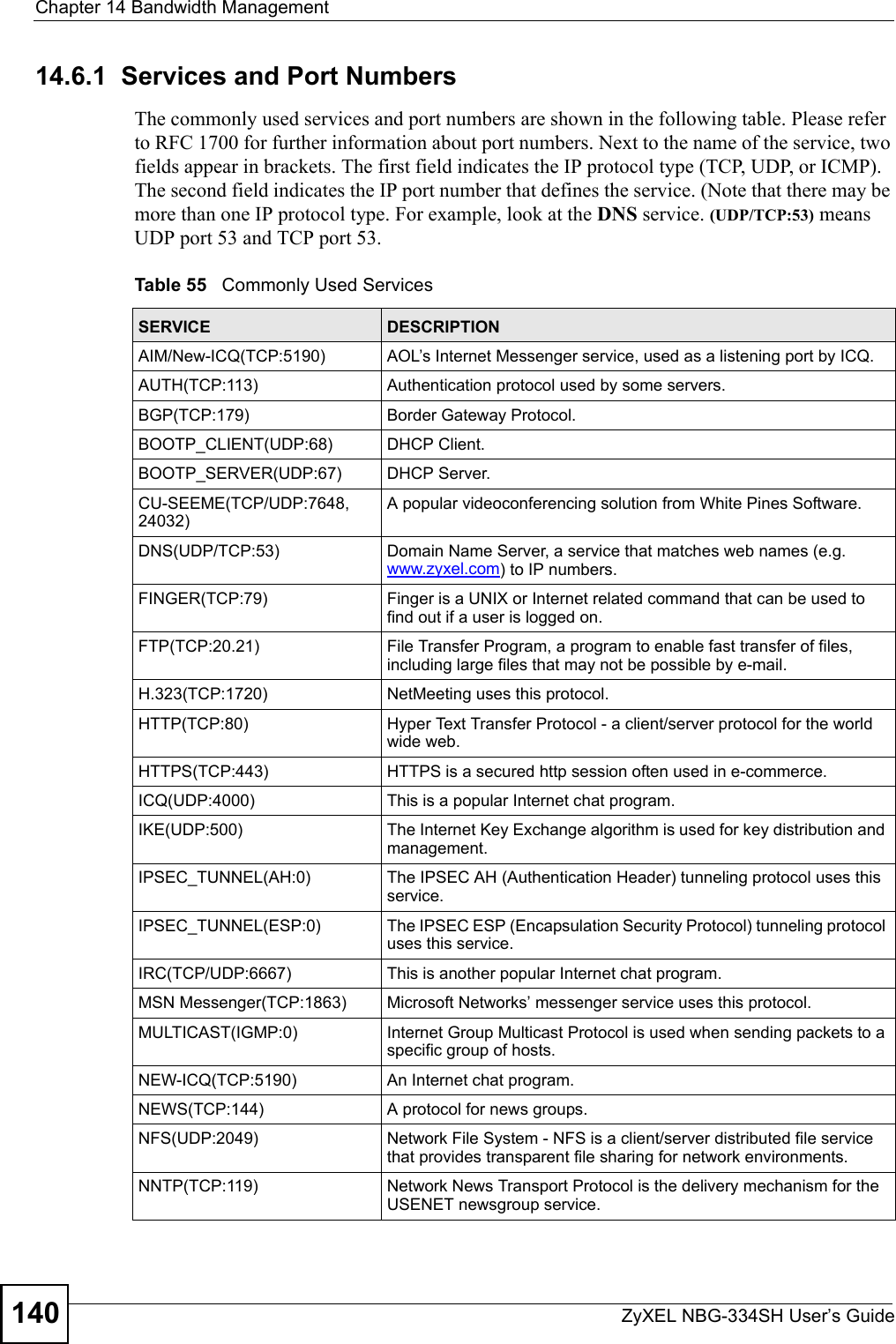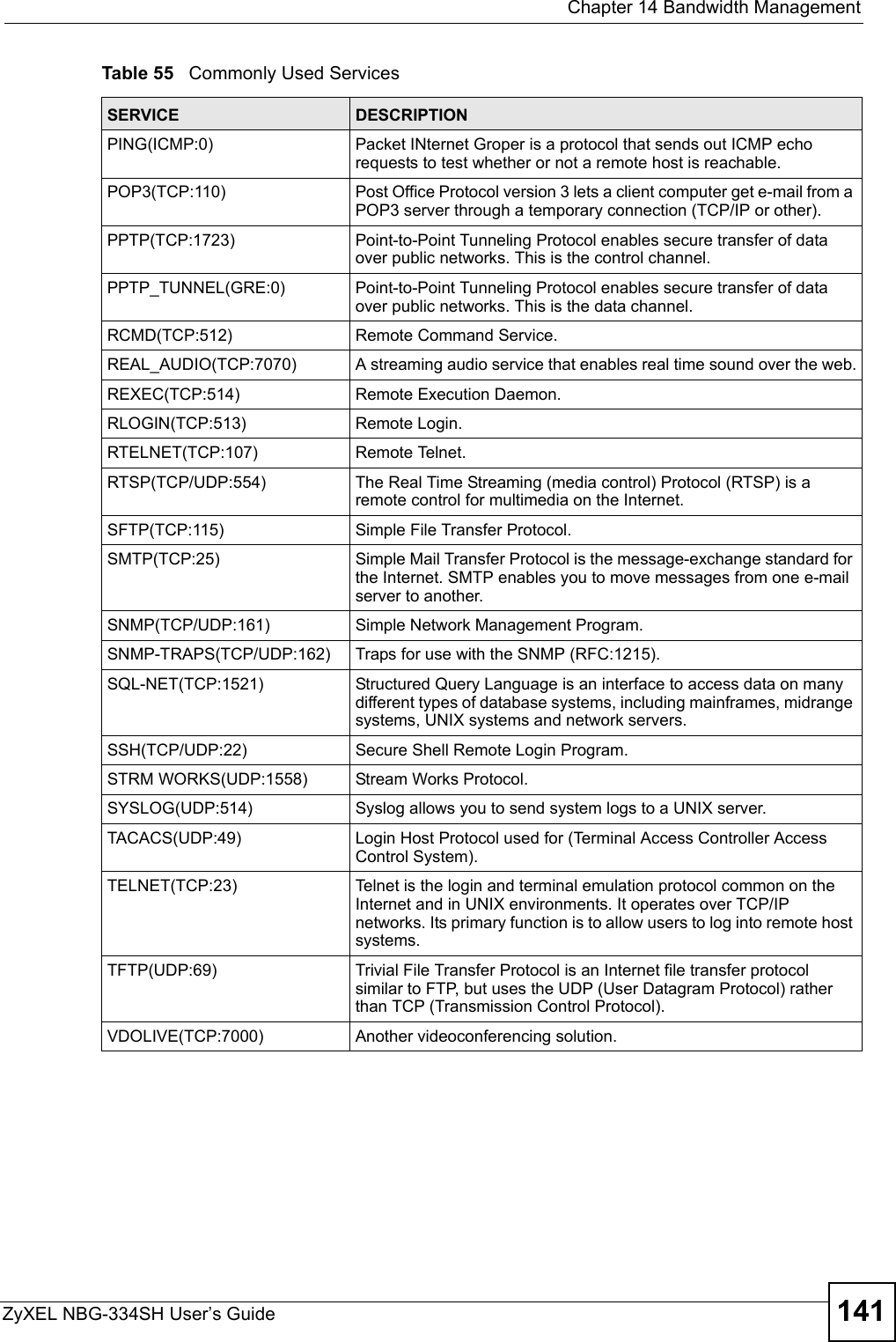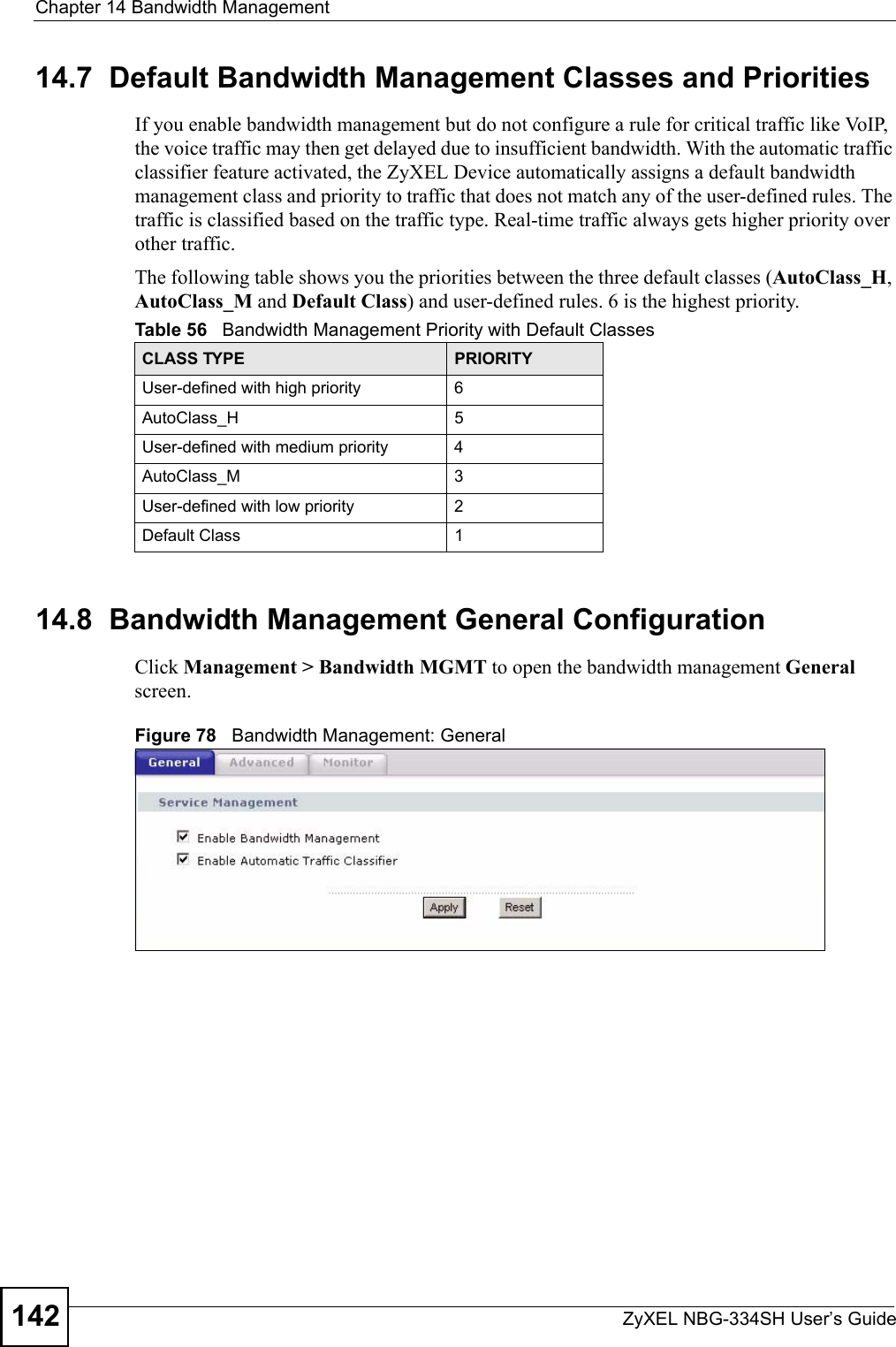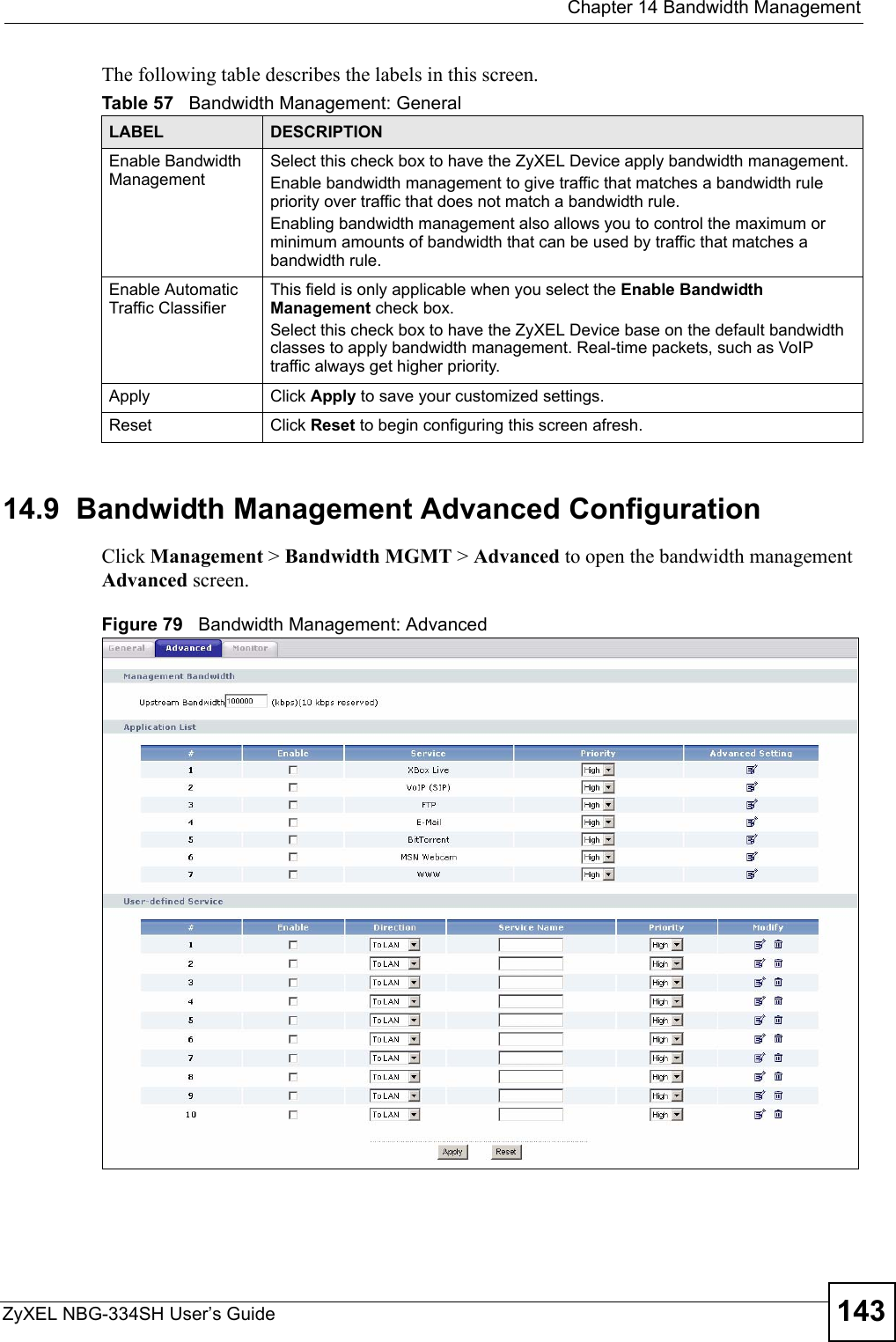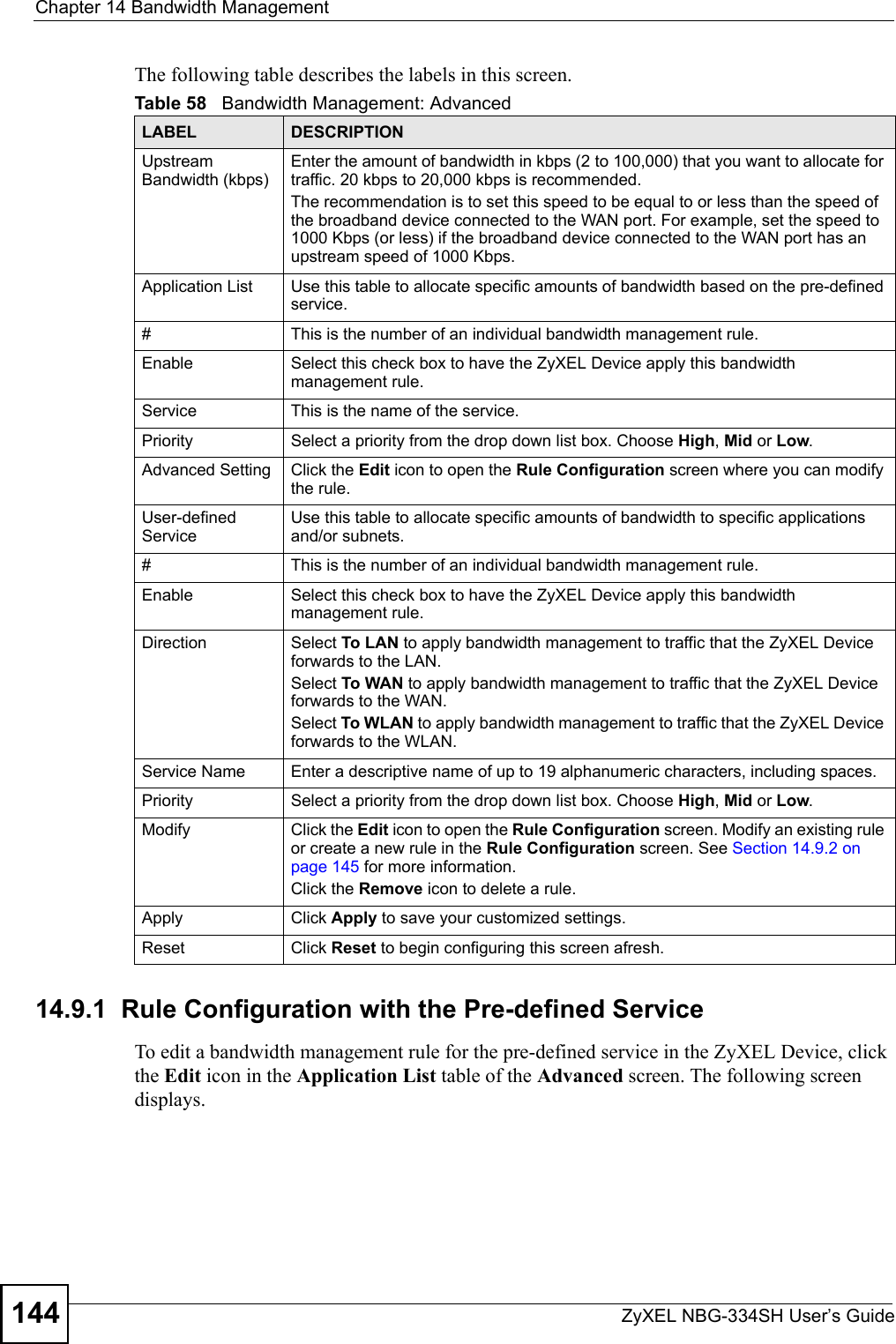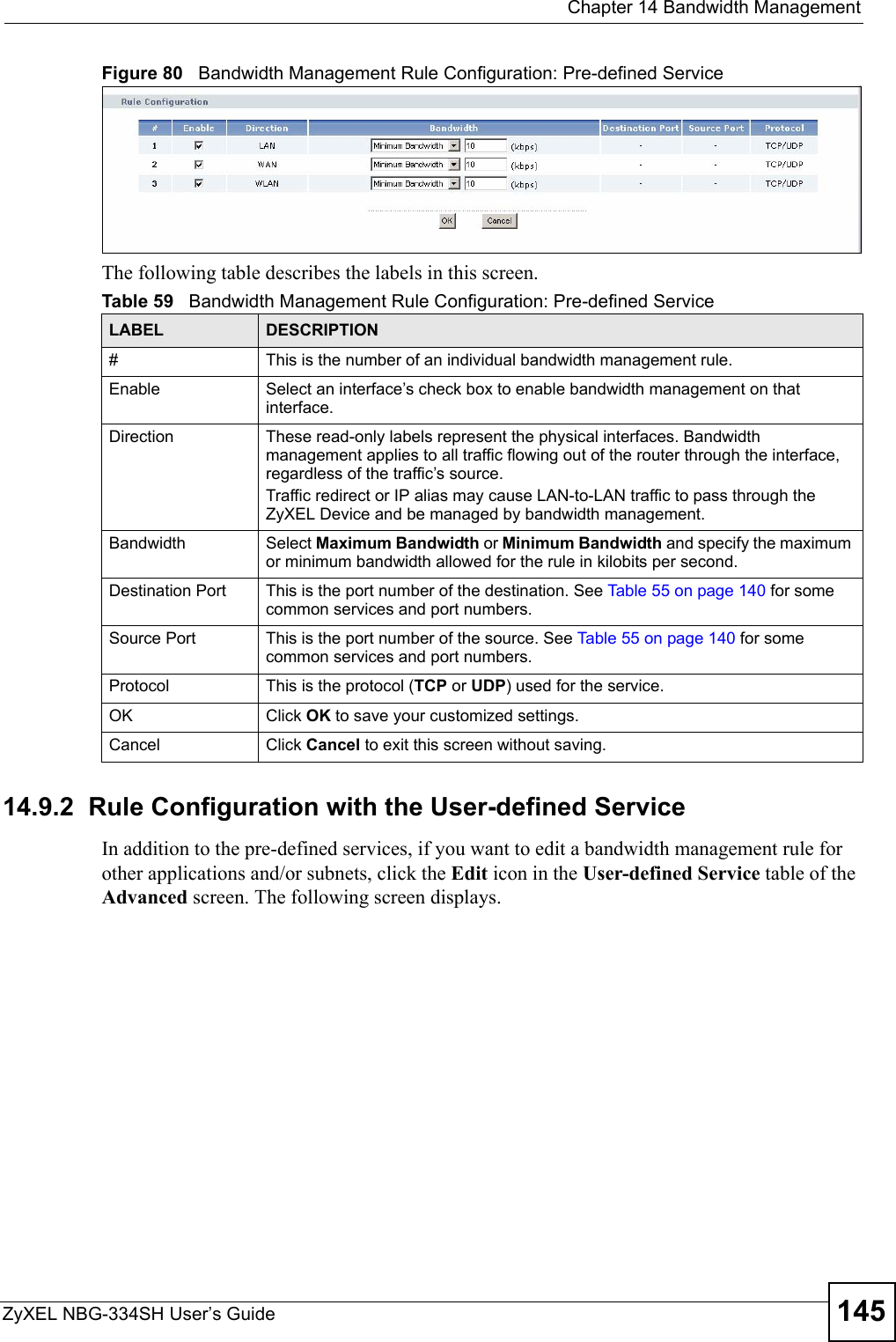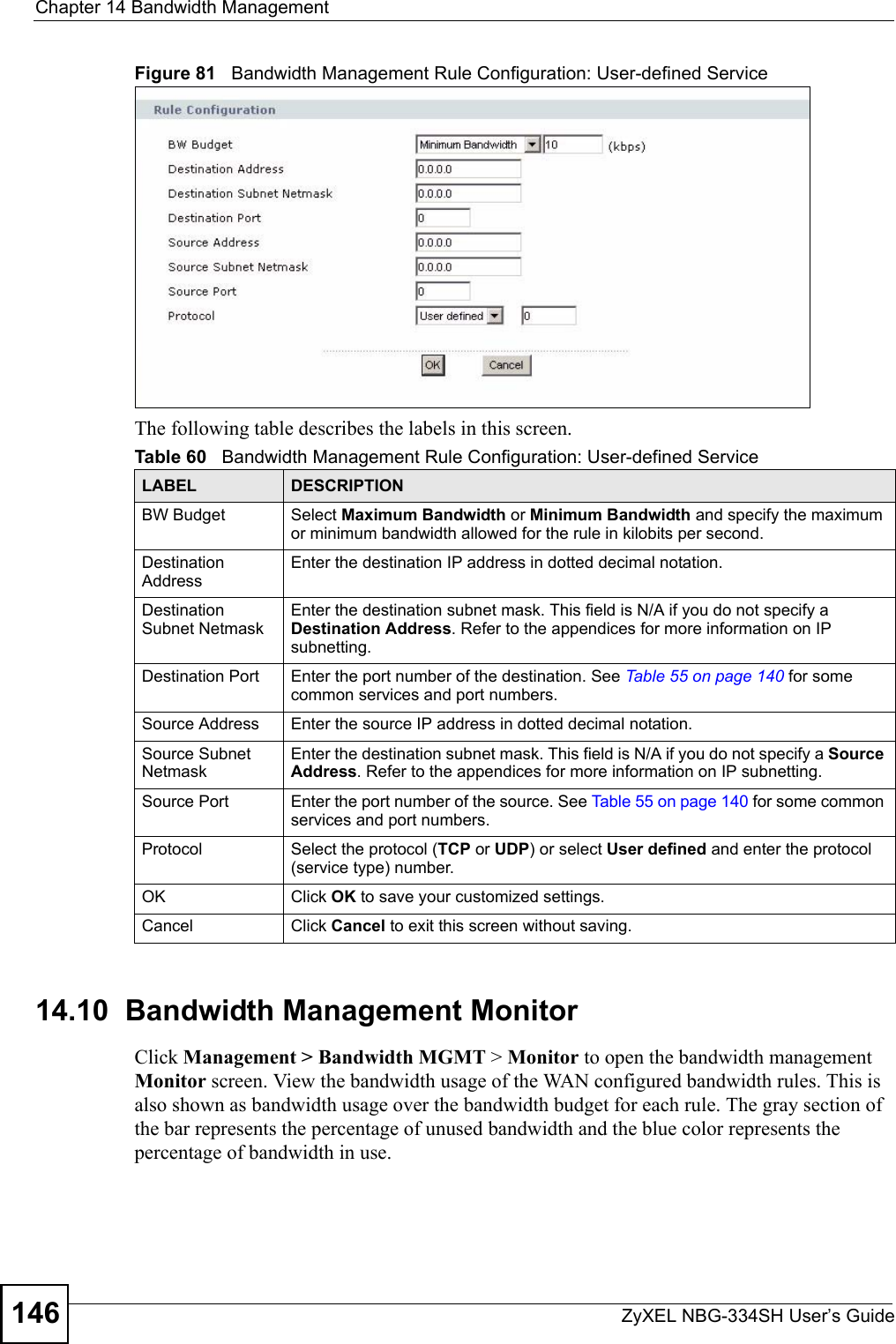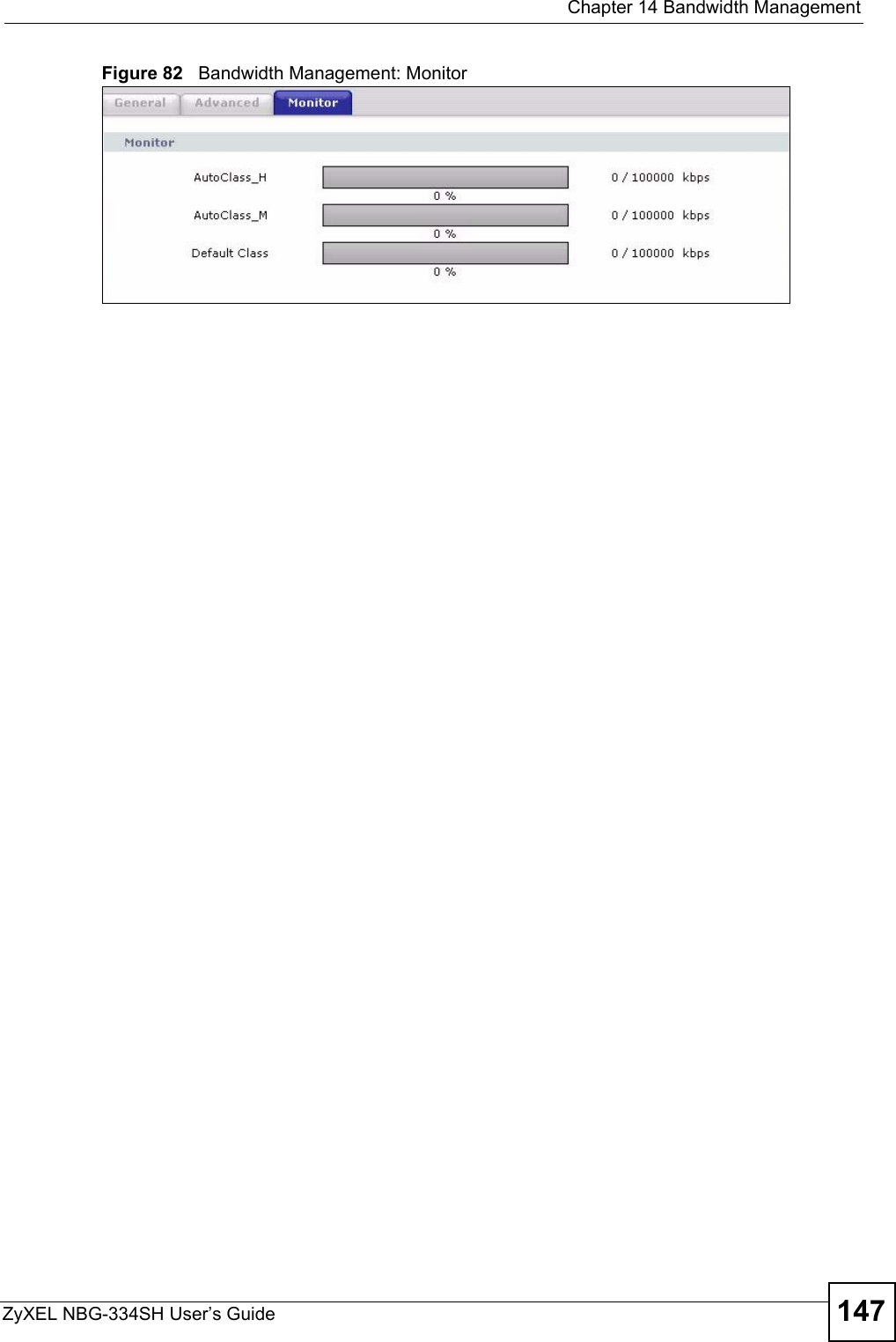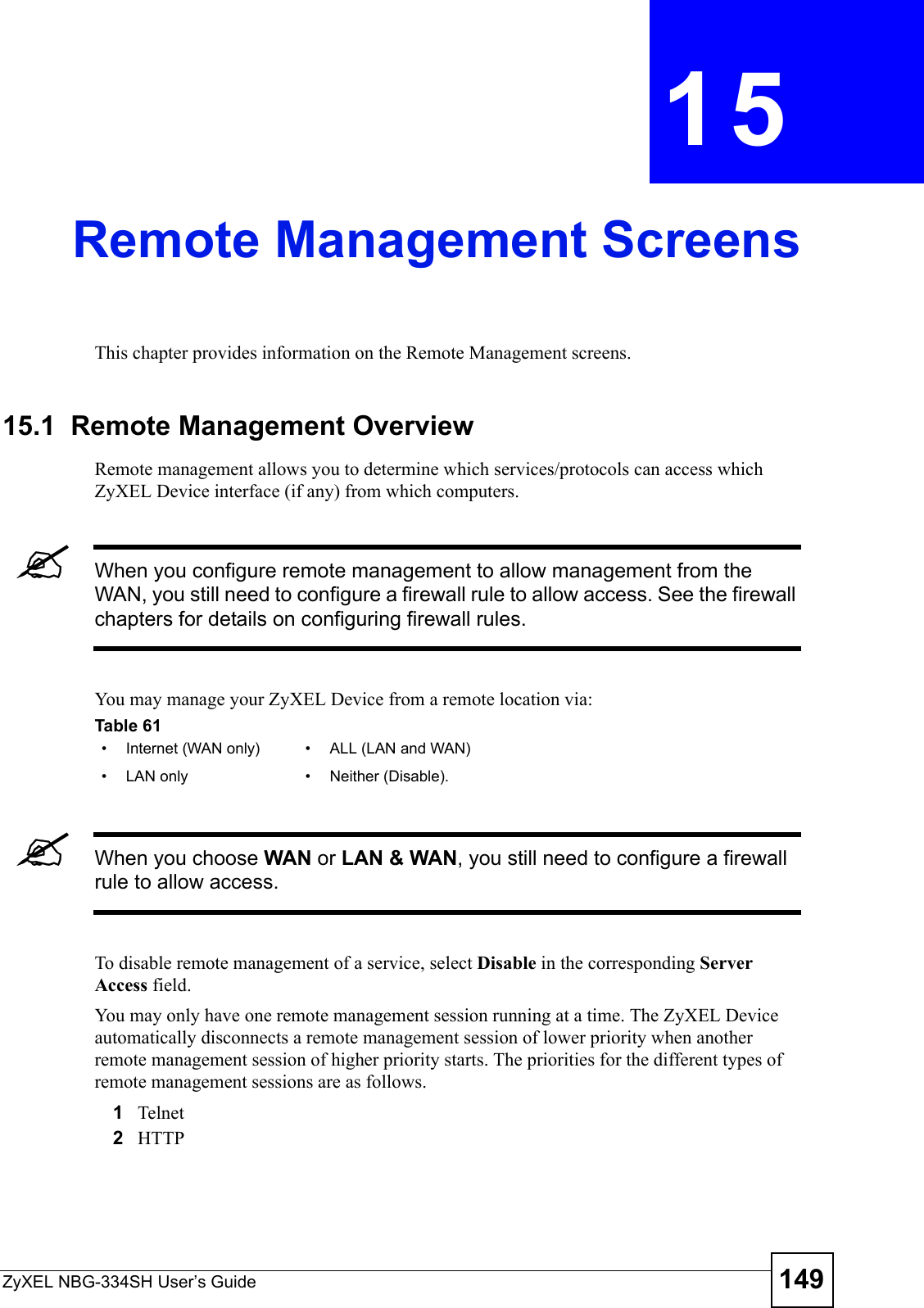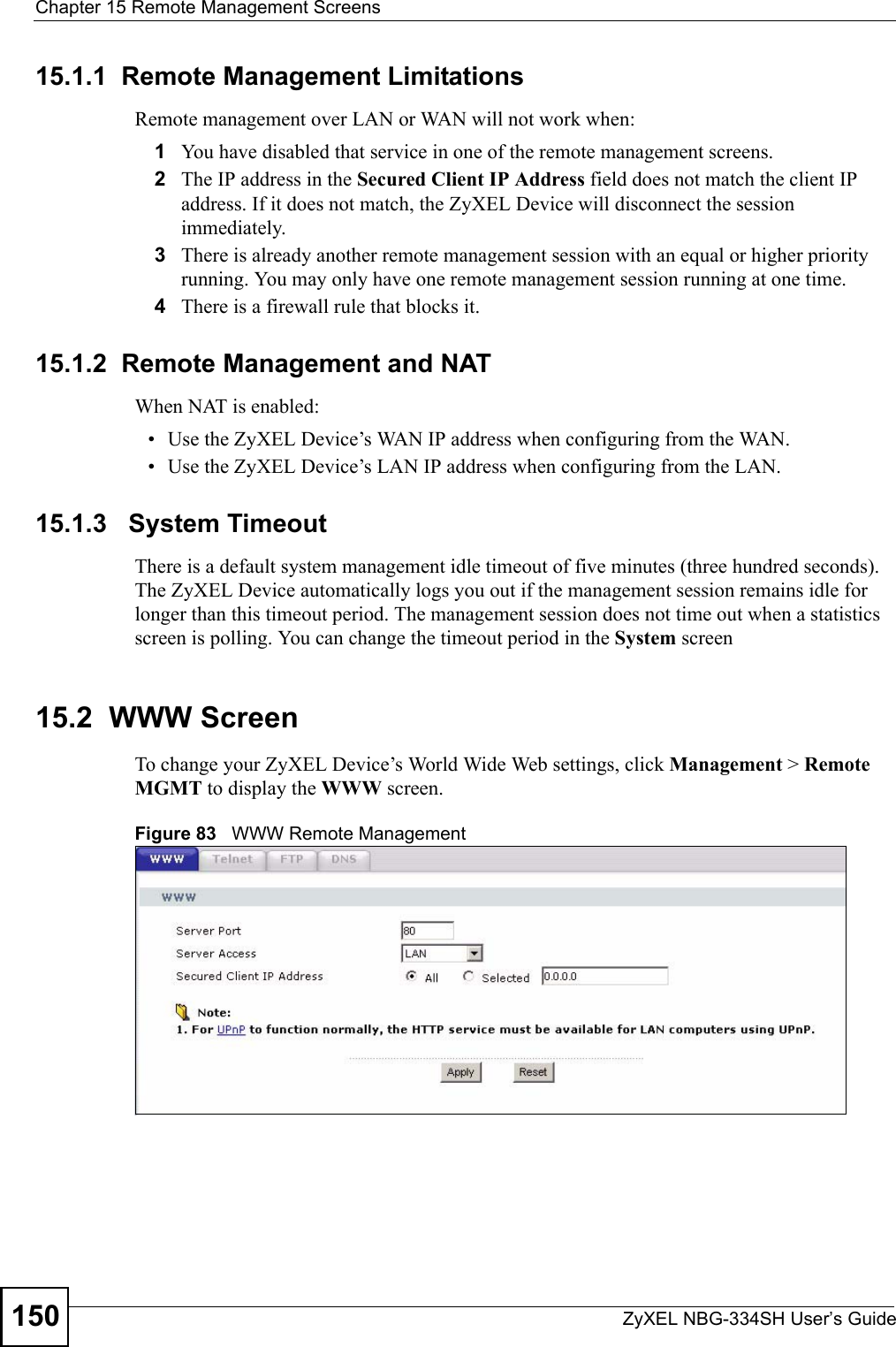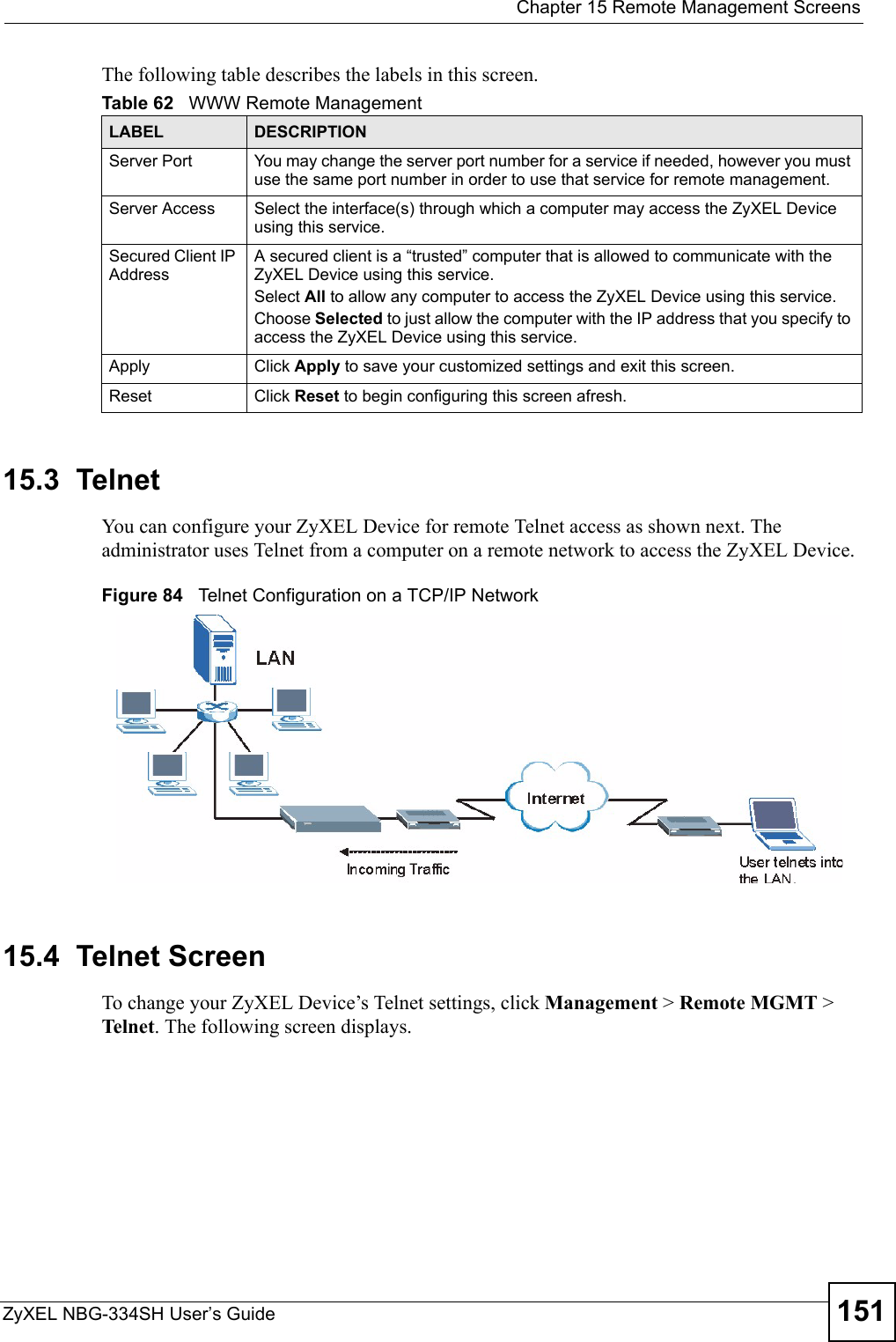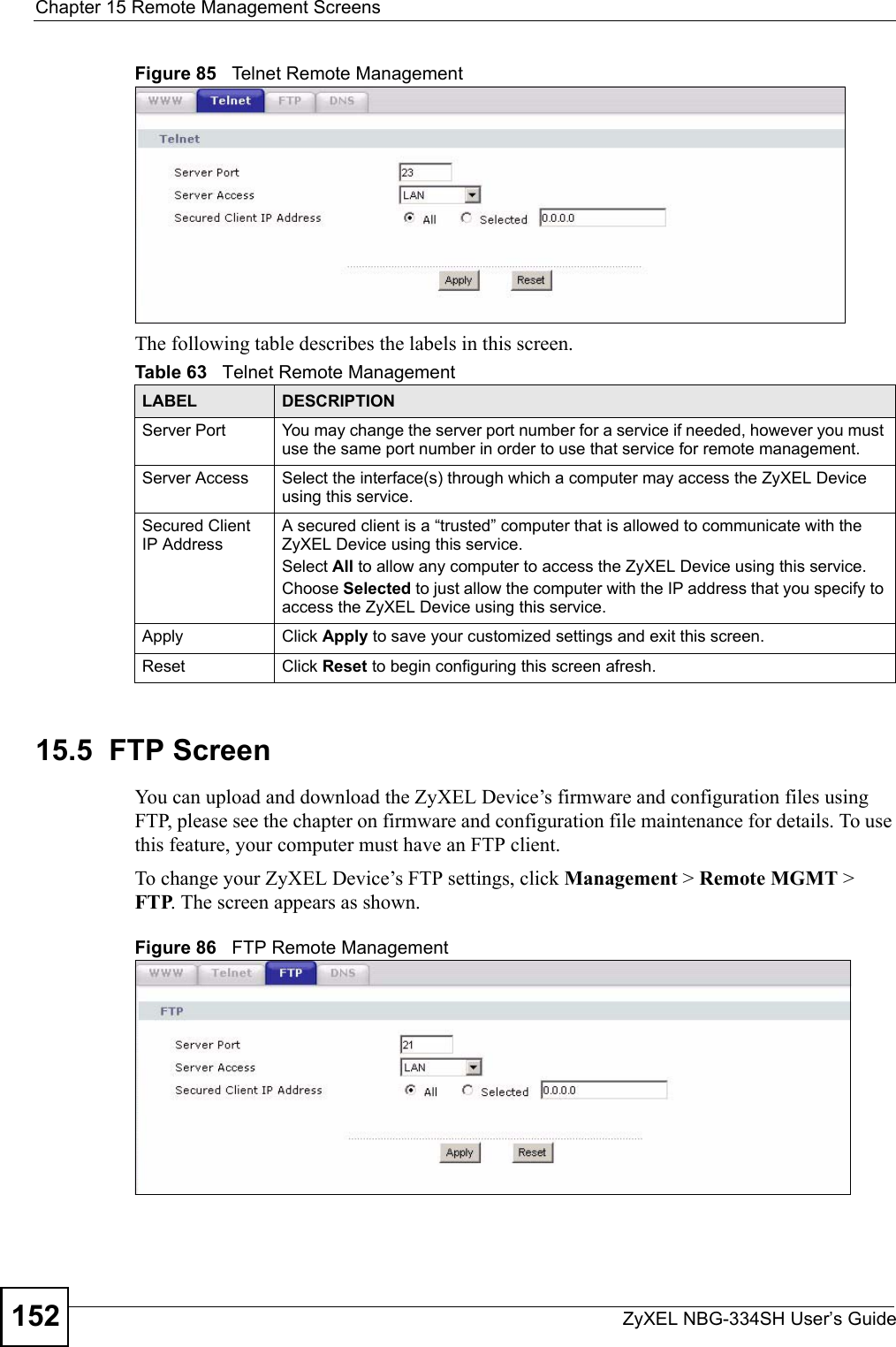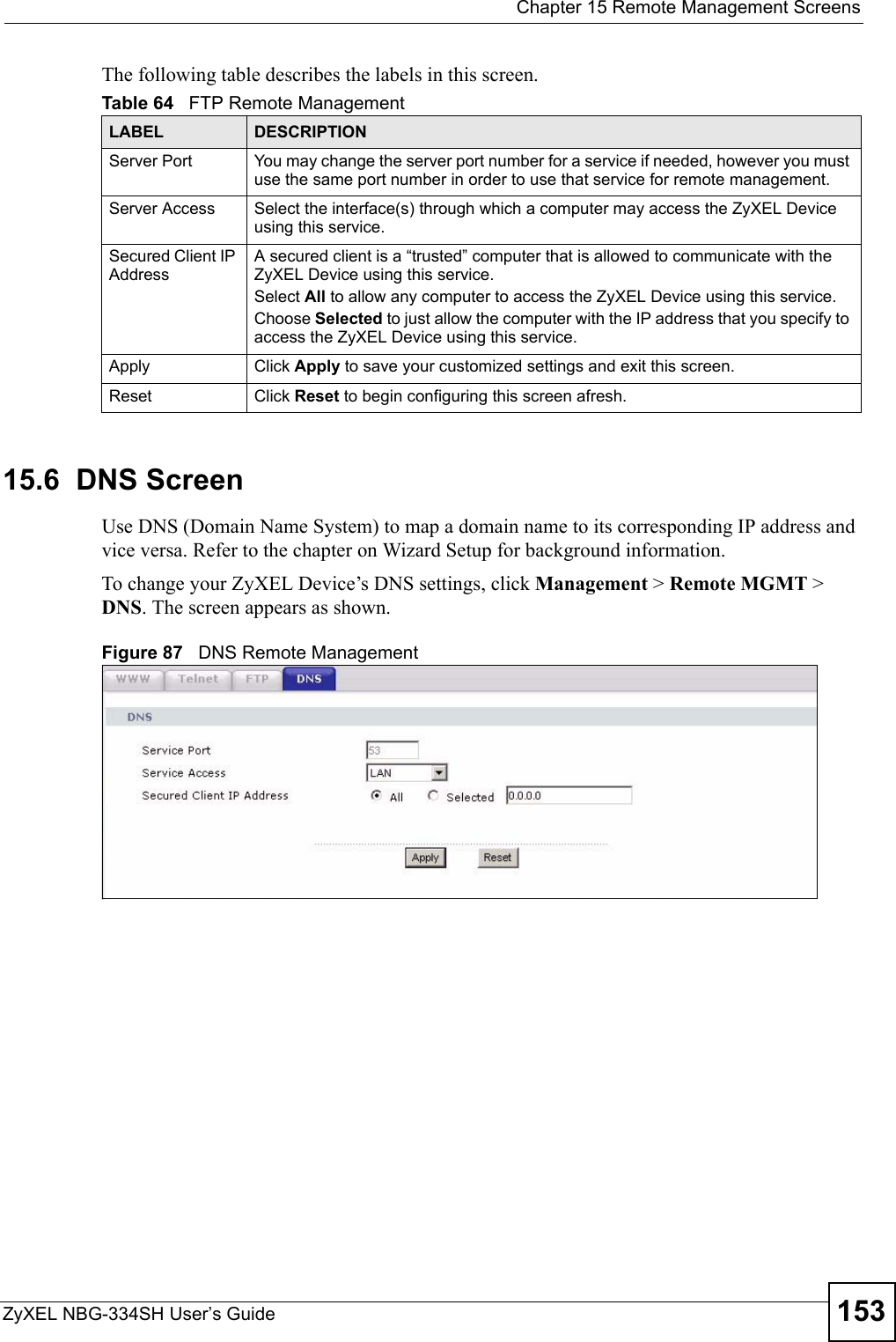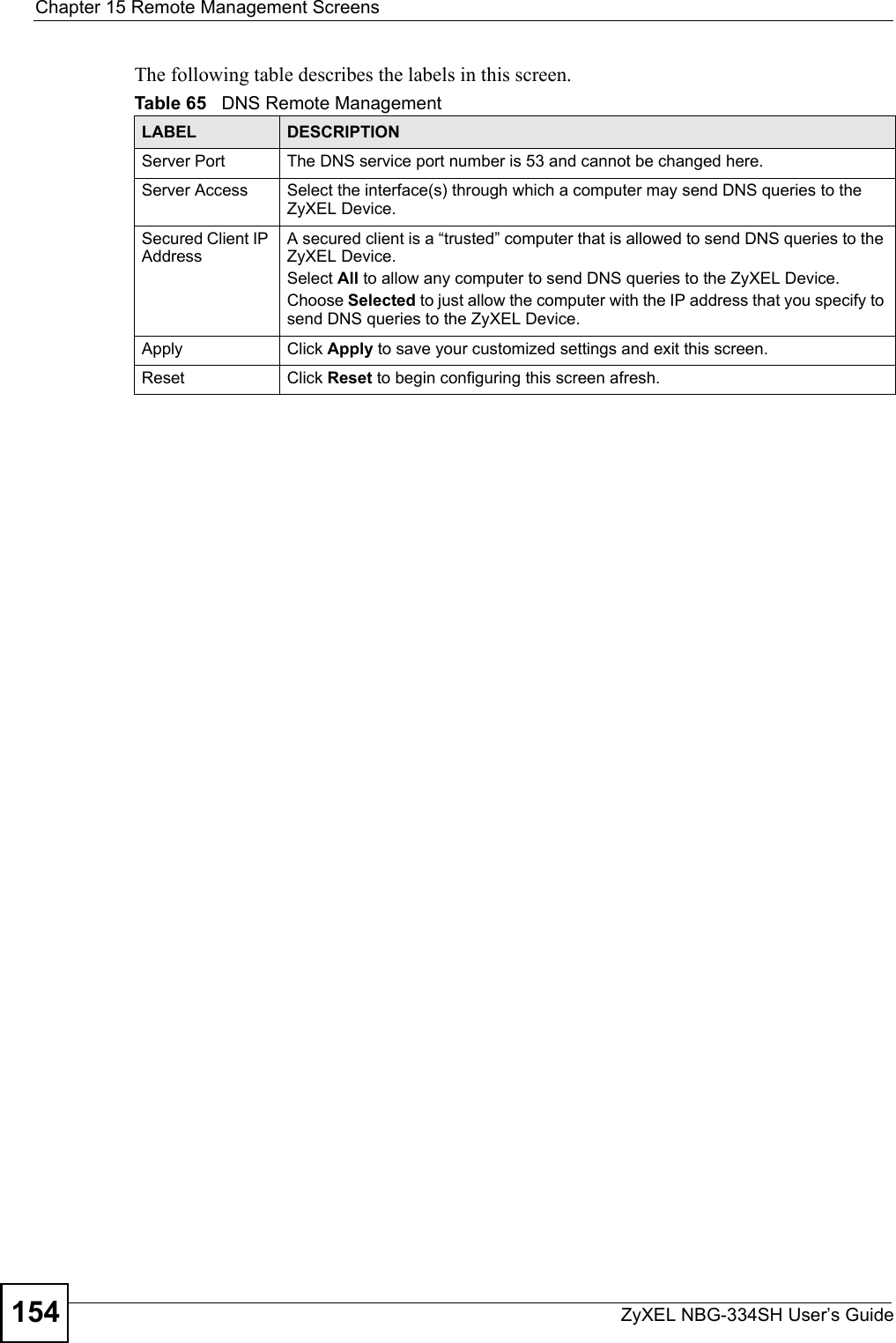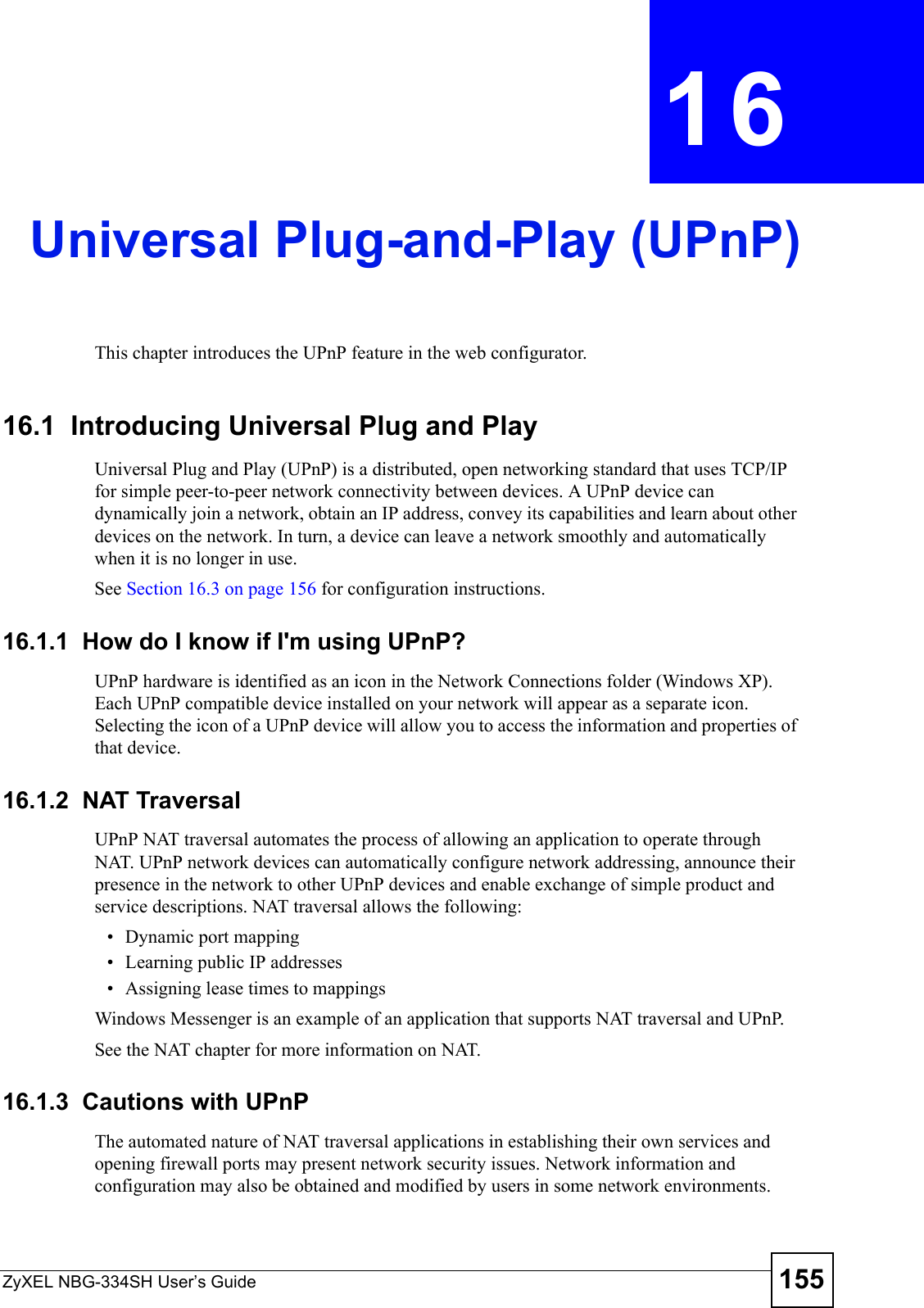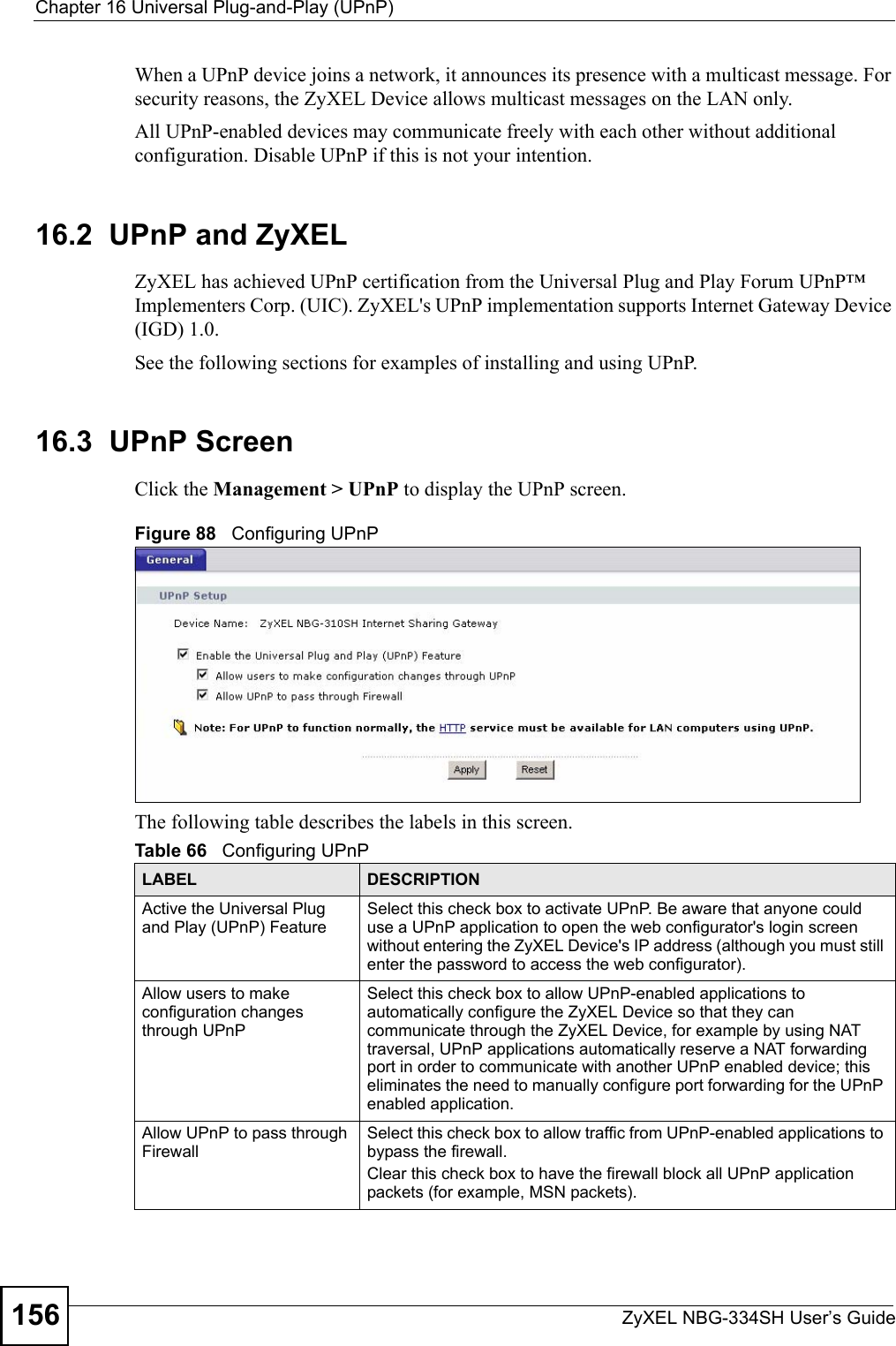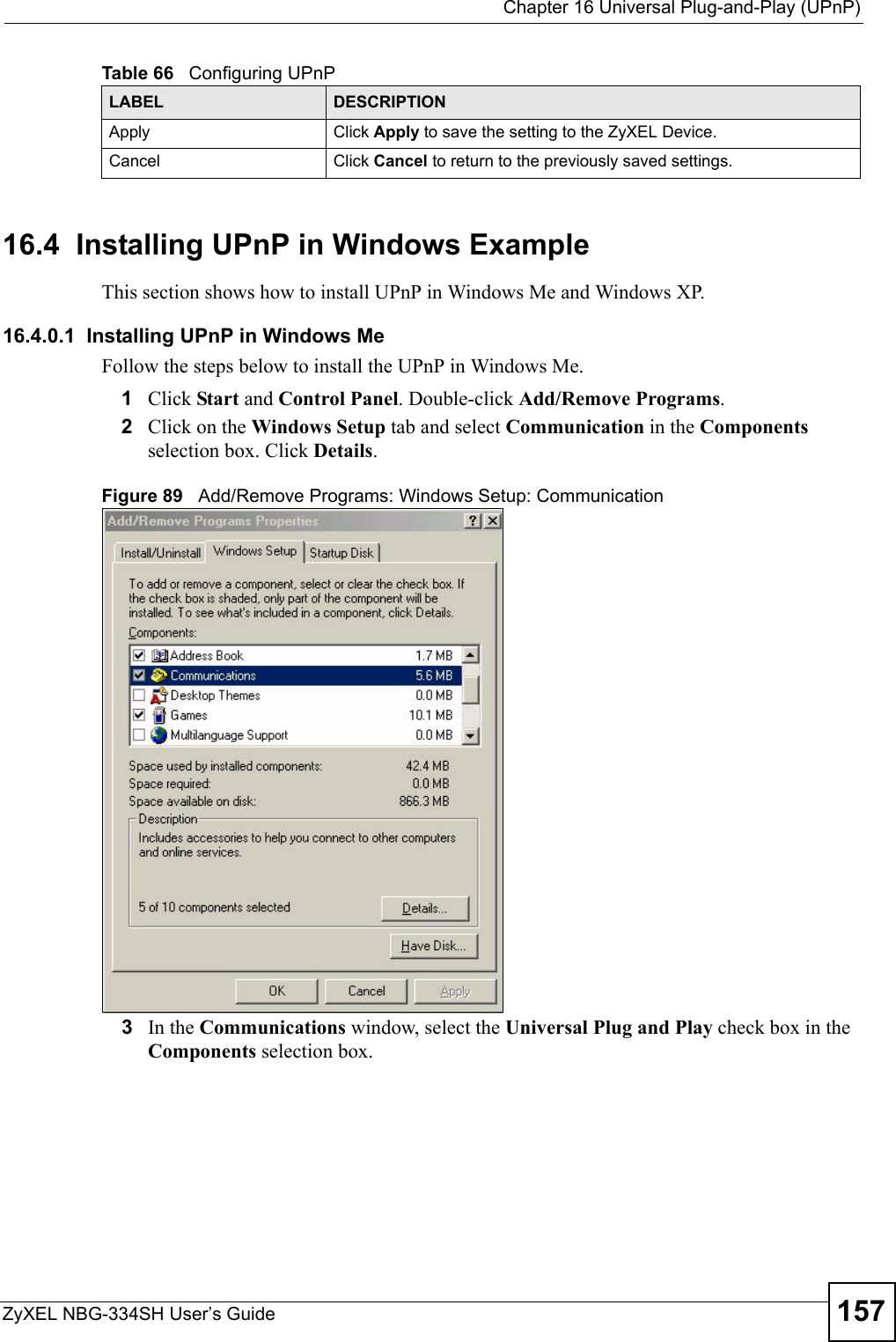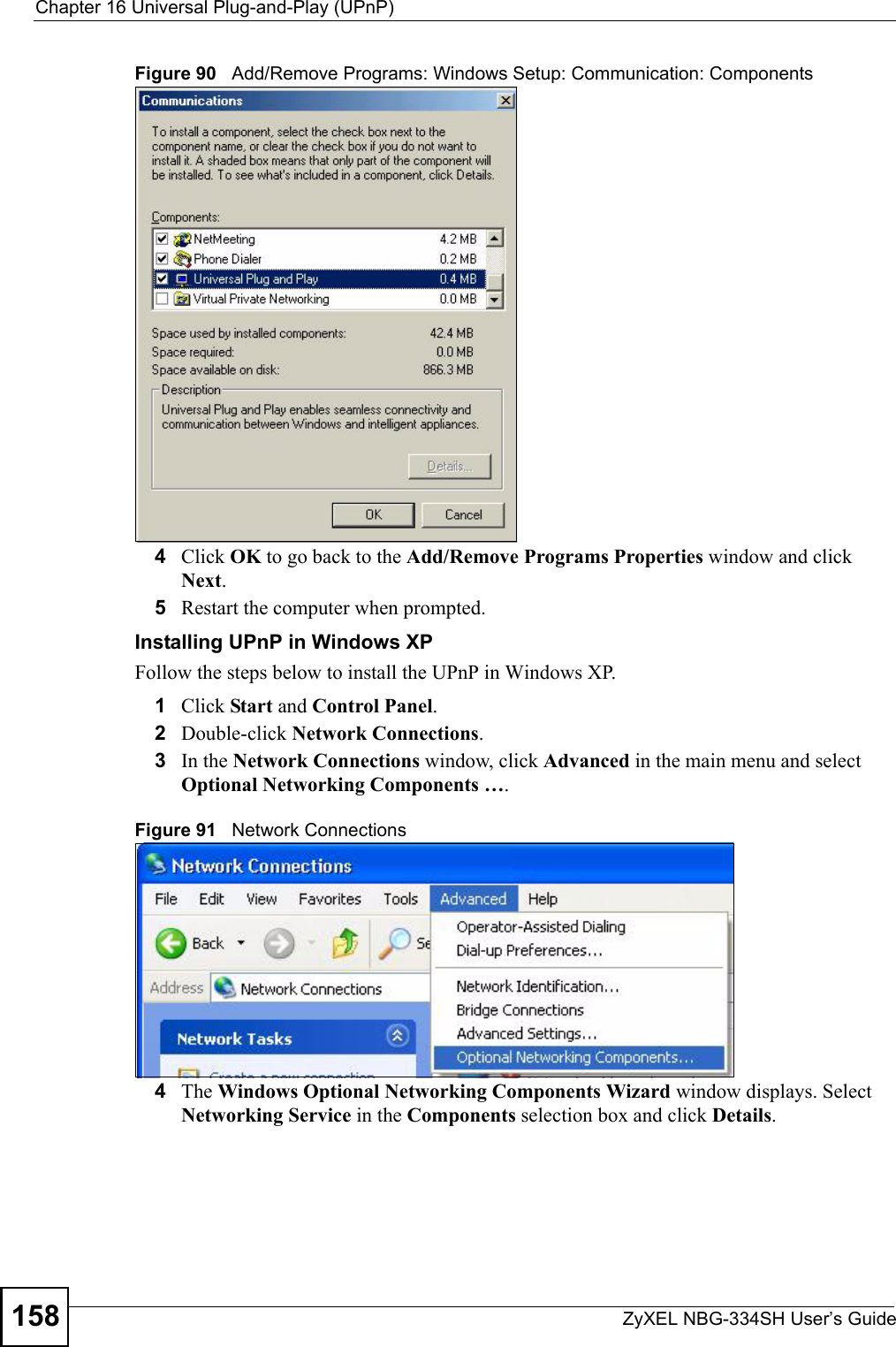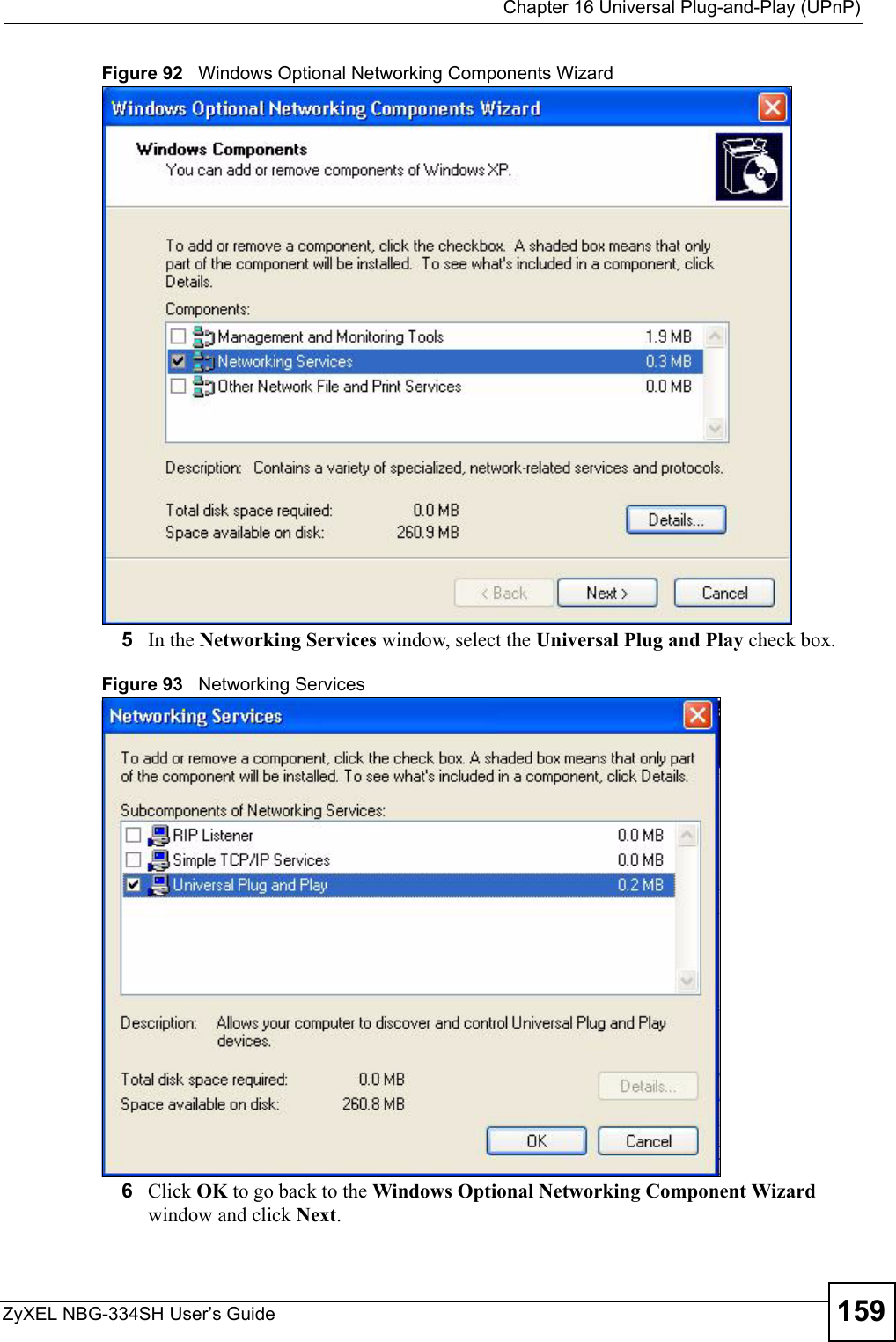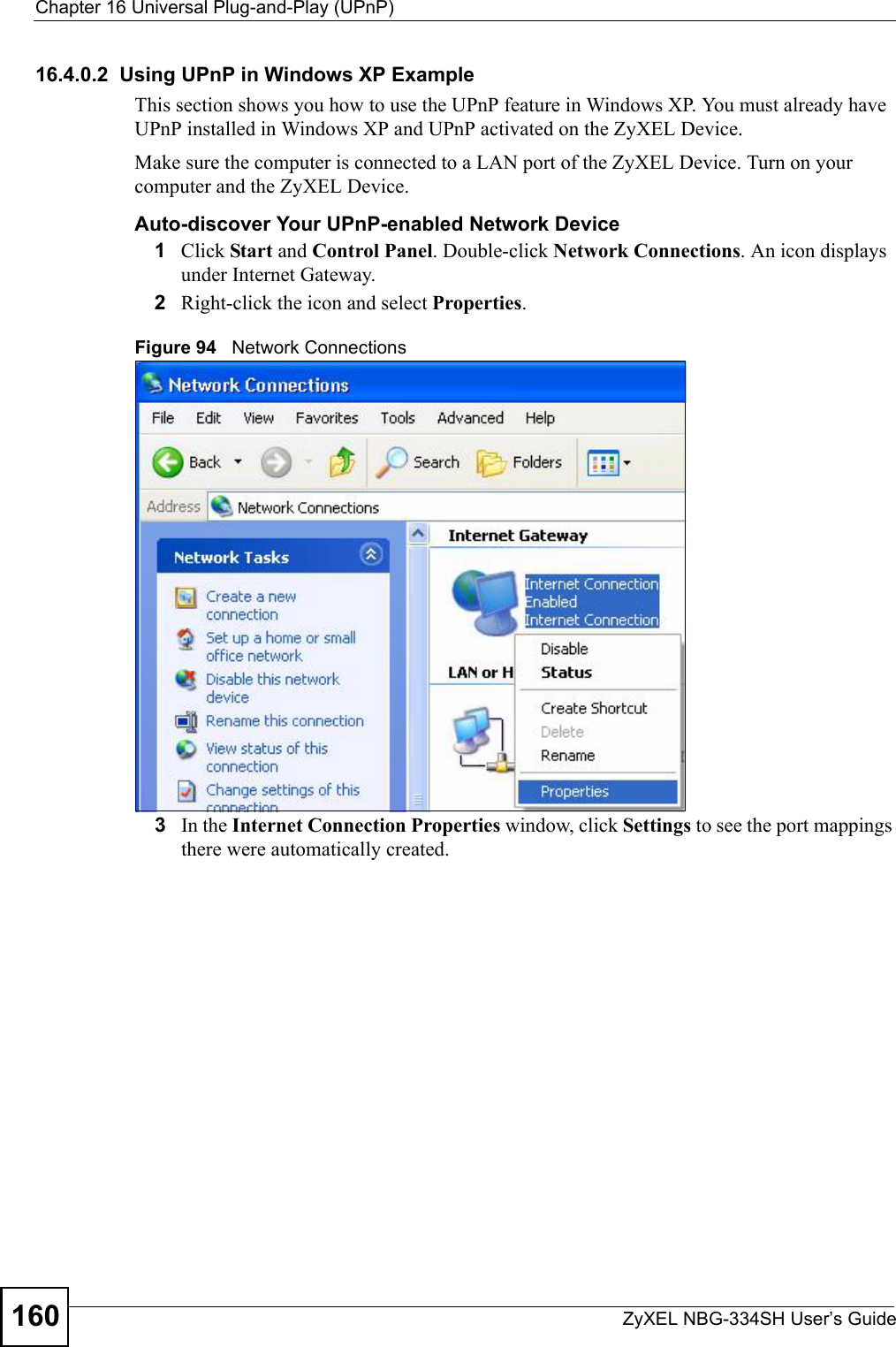ZyXEL Communications NBG334SH1 Wireless Router User Manual SMG 700 User s Guide V1 00 Nov 2004
ZyXEL Communications Corporation Wireless Router SMG 700 User s Guide V1 00 Nov 2004
Contents
- 1. users manual pt1
- 2. users manual pt2
- 3. users manual pt3
- 4. users manual pt4
users manual pt2
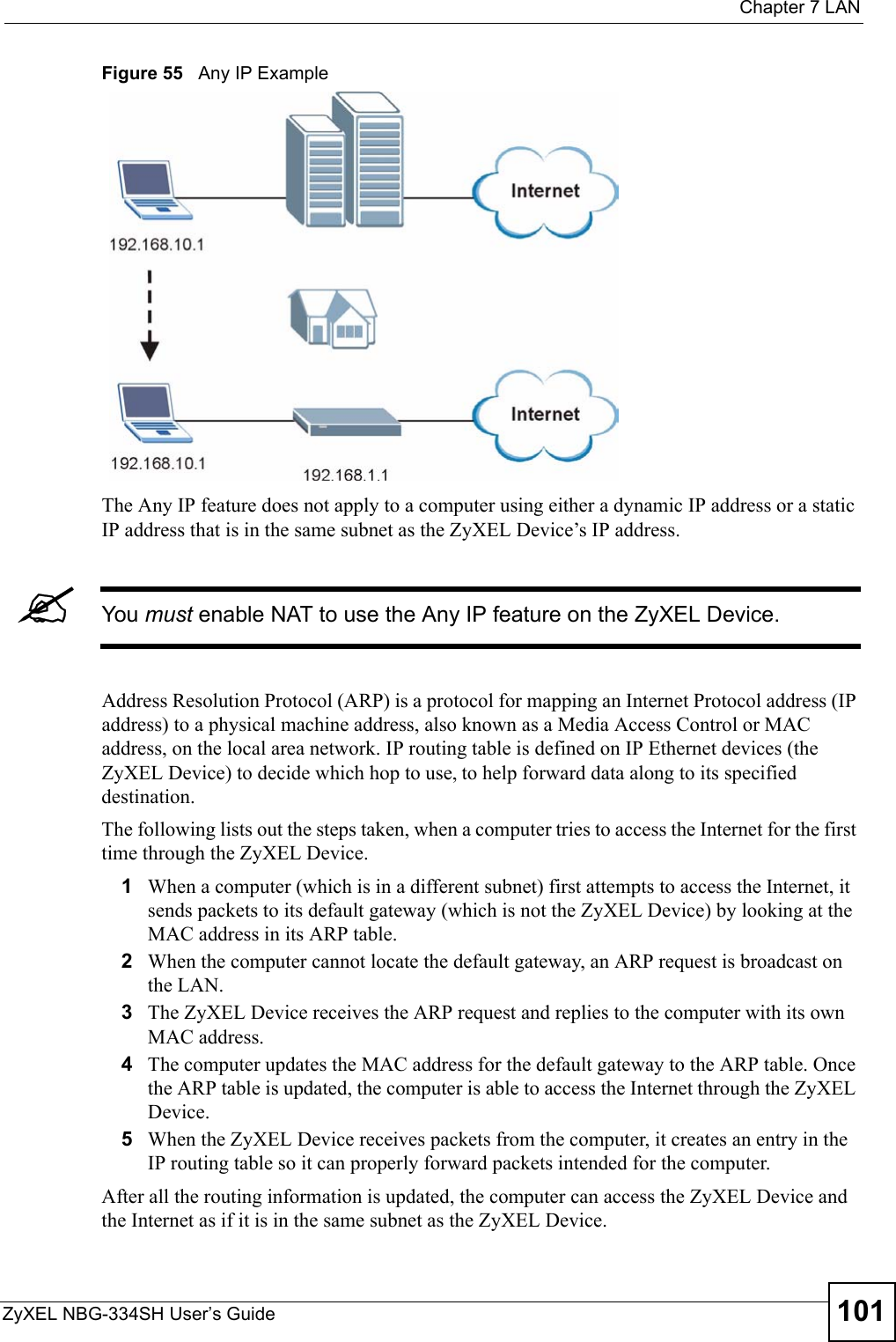
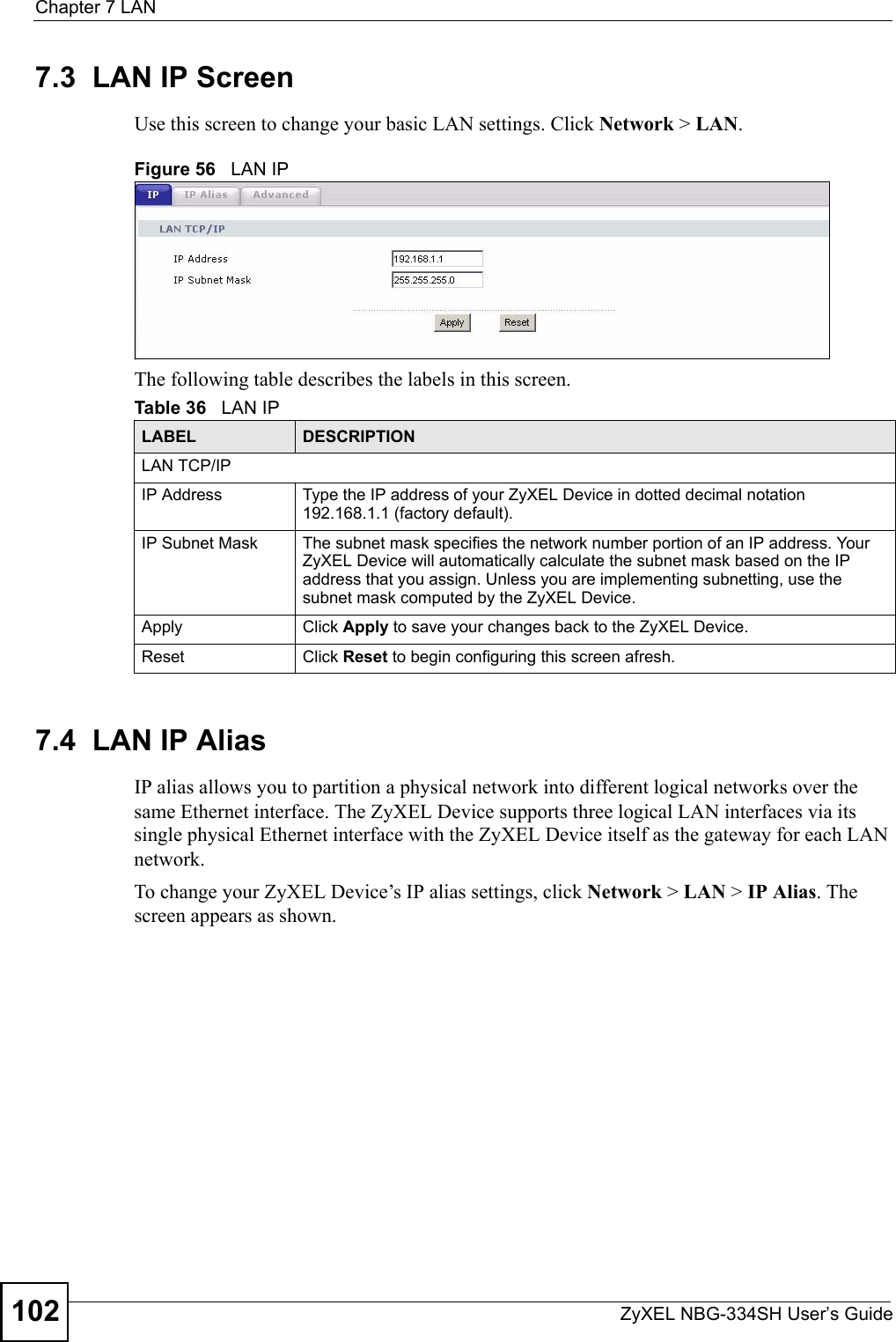
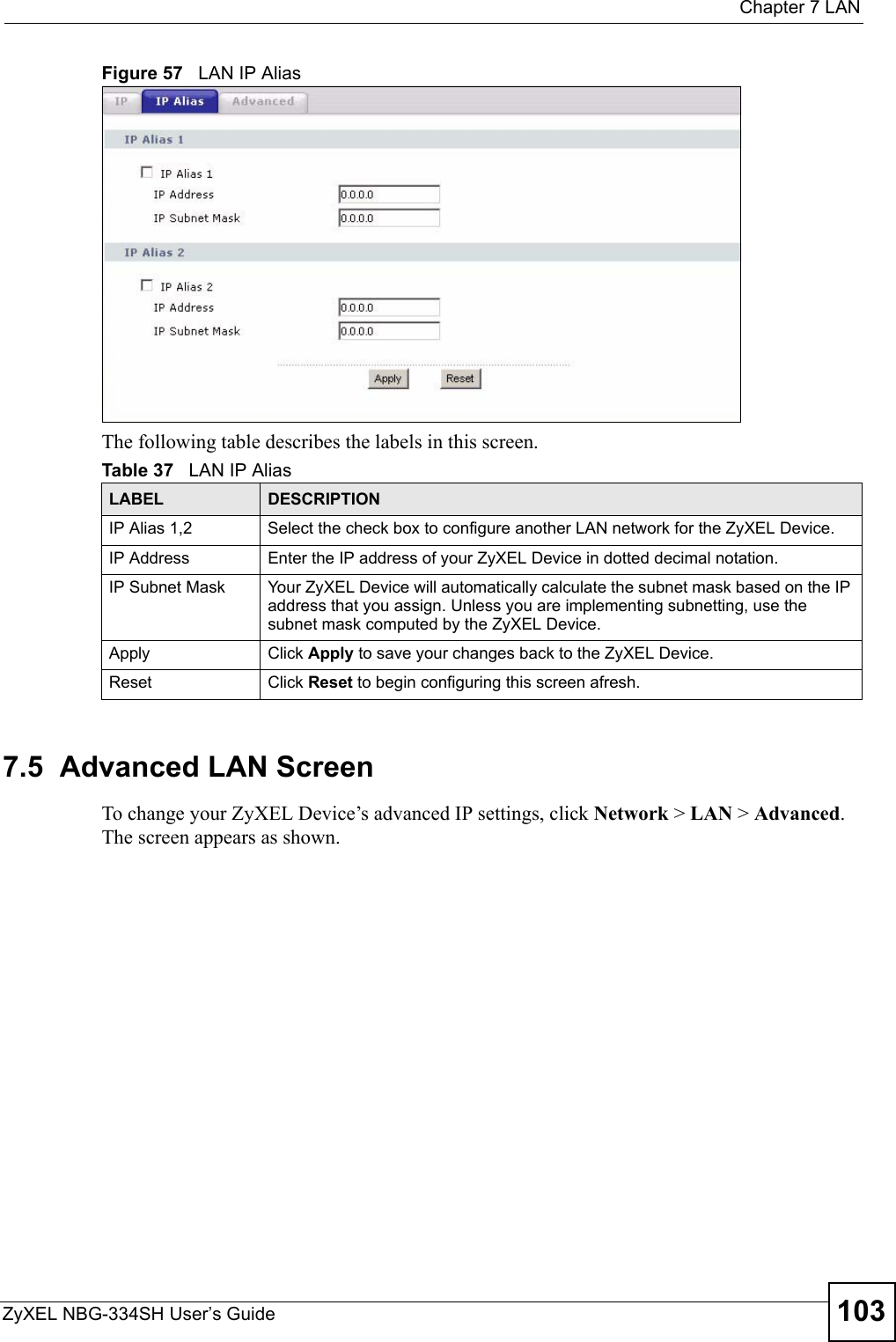
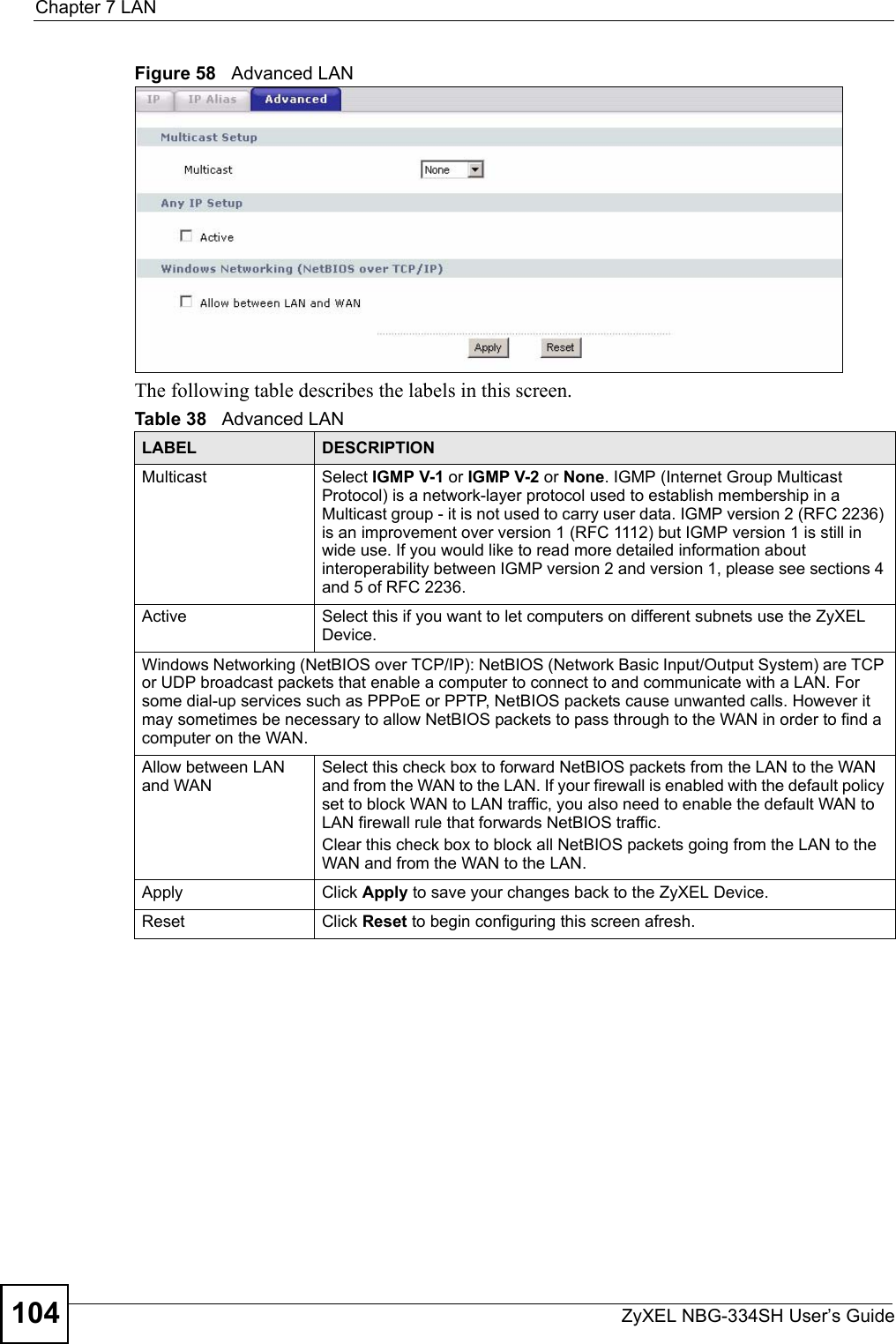
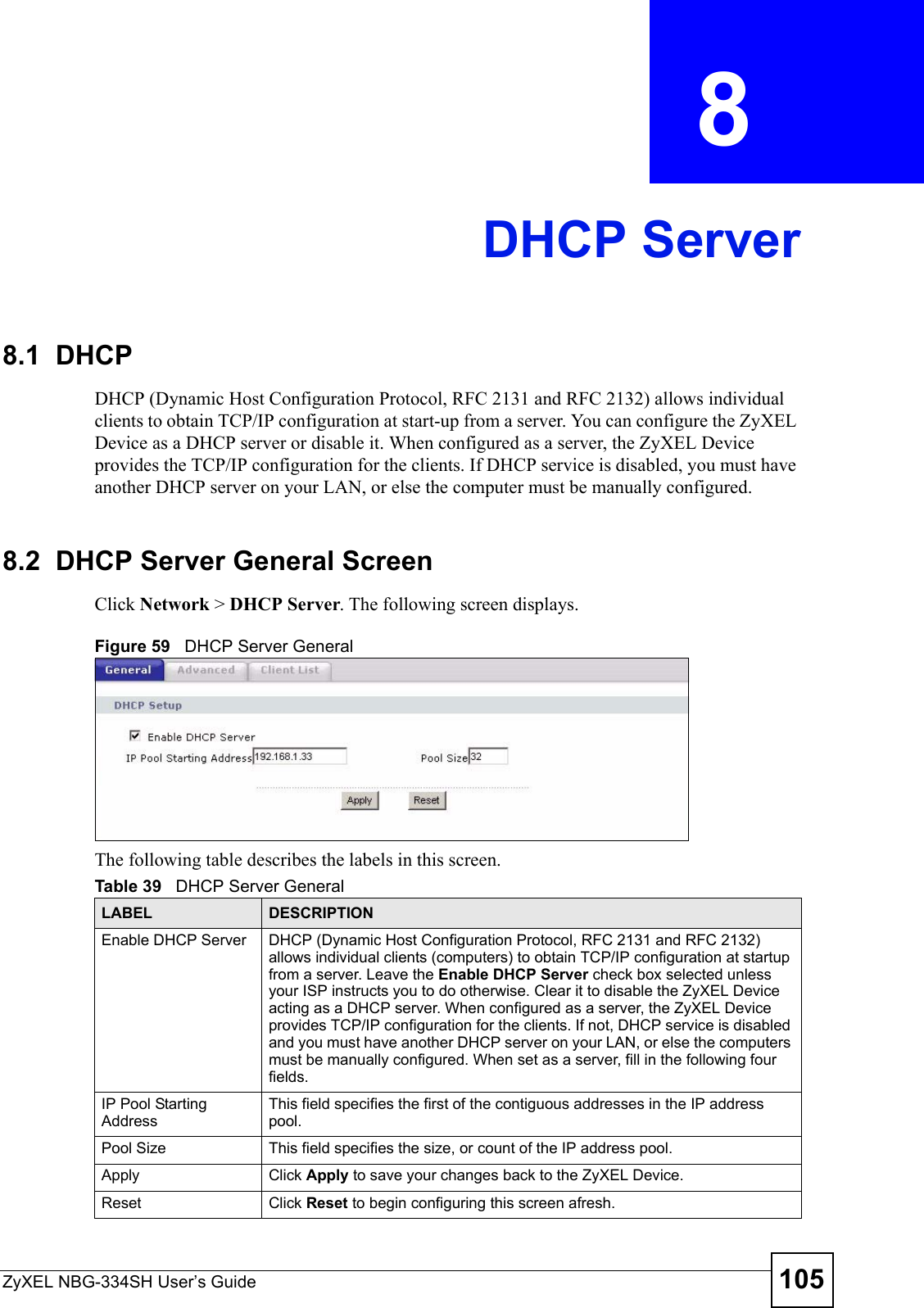
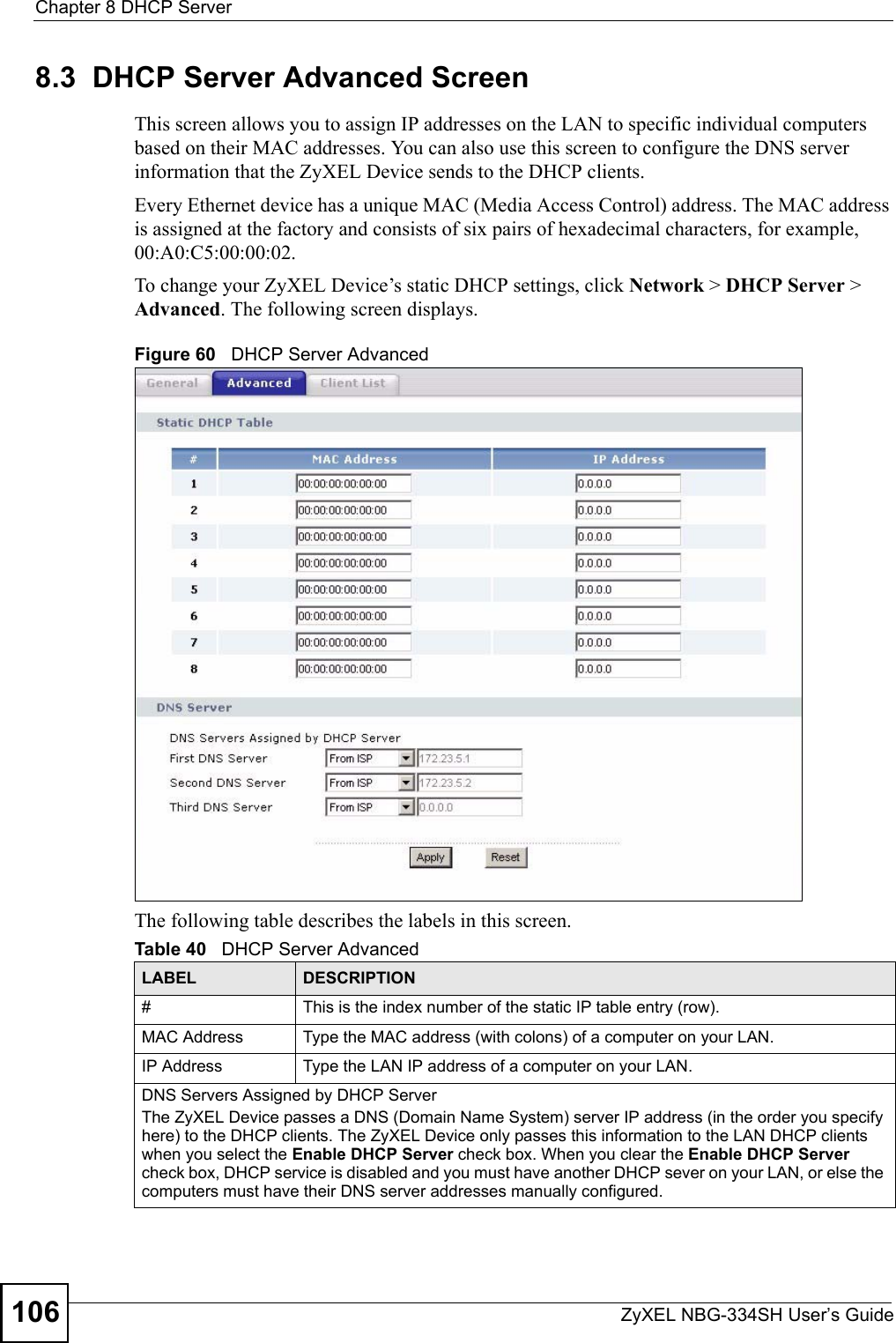

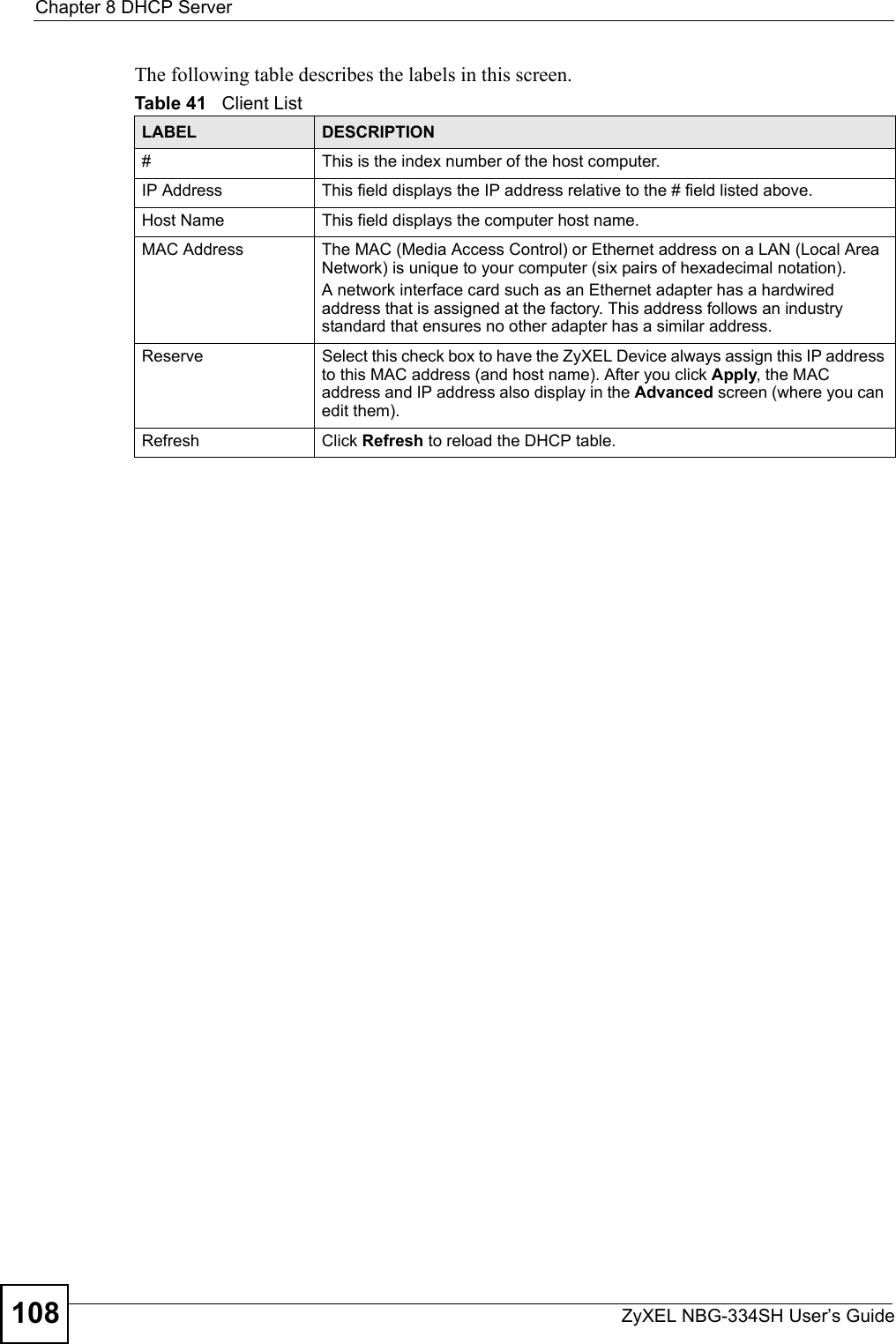
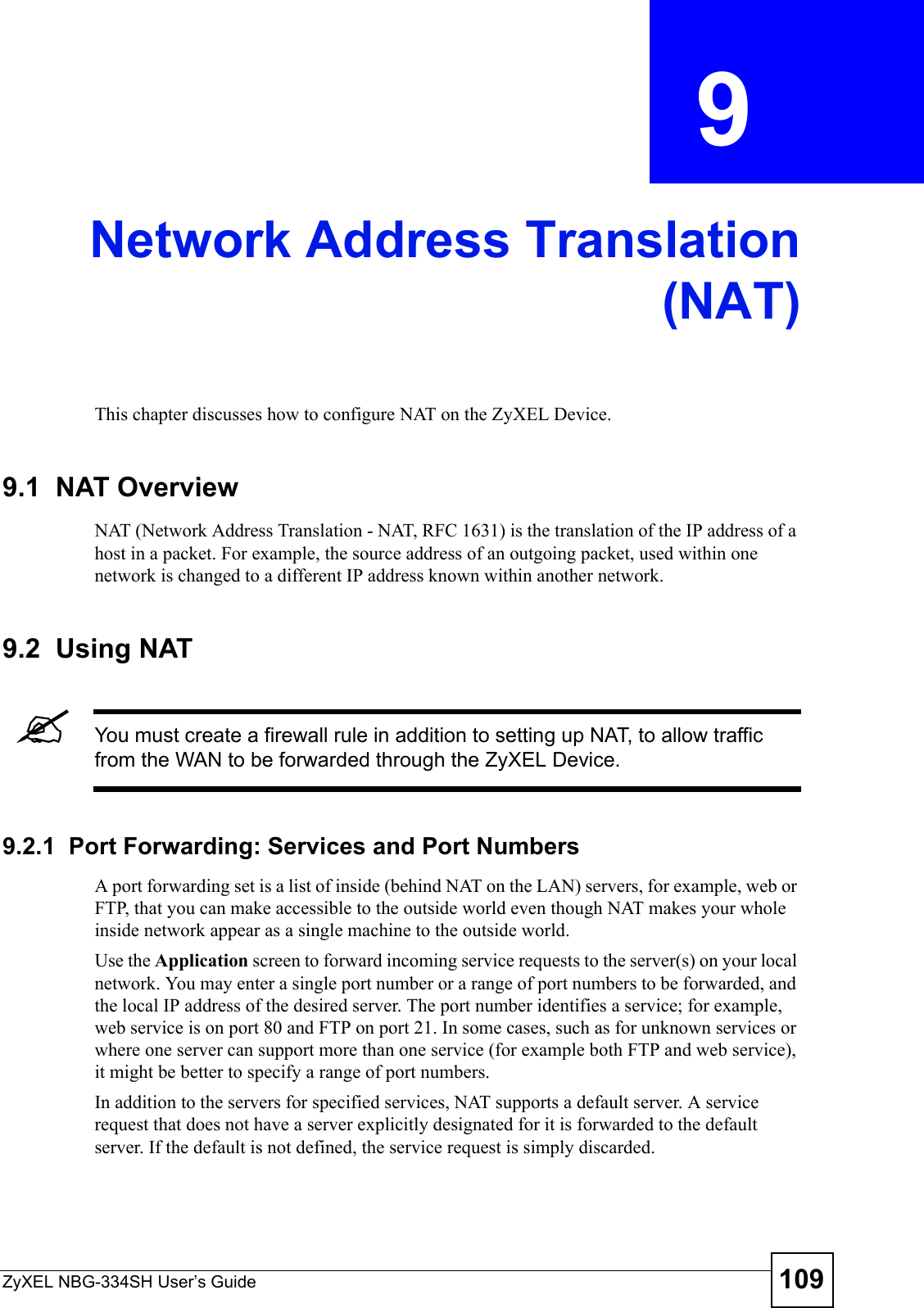
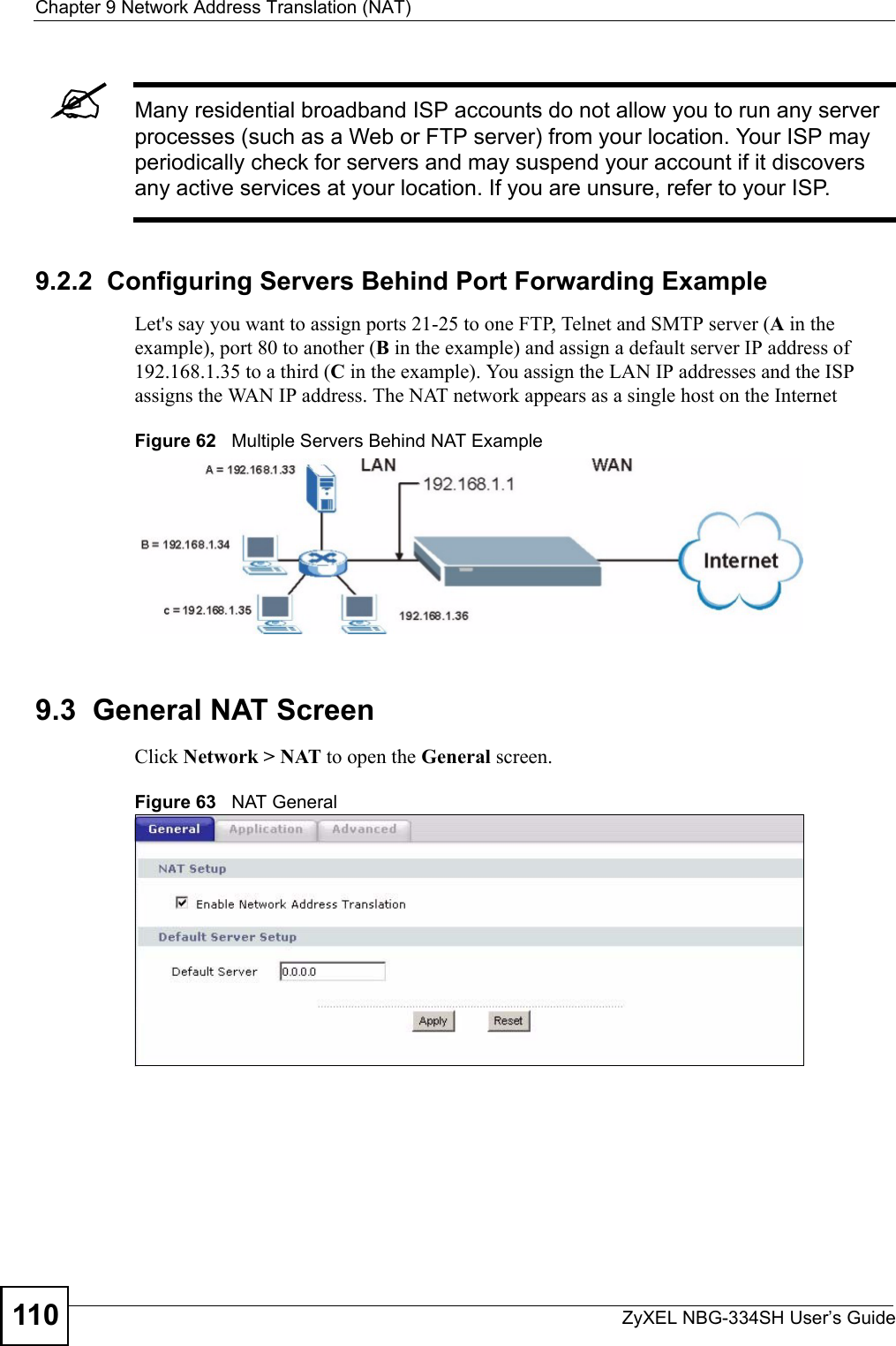
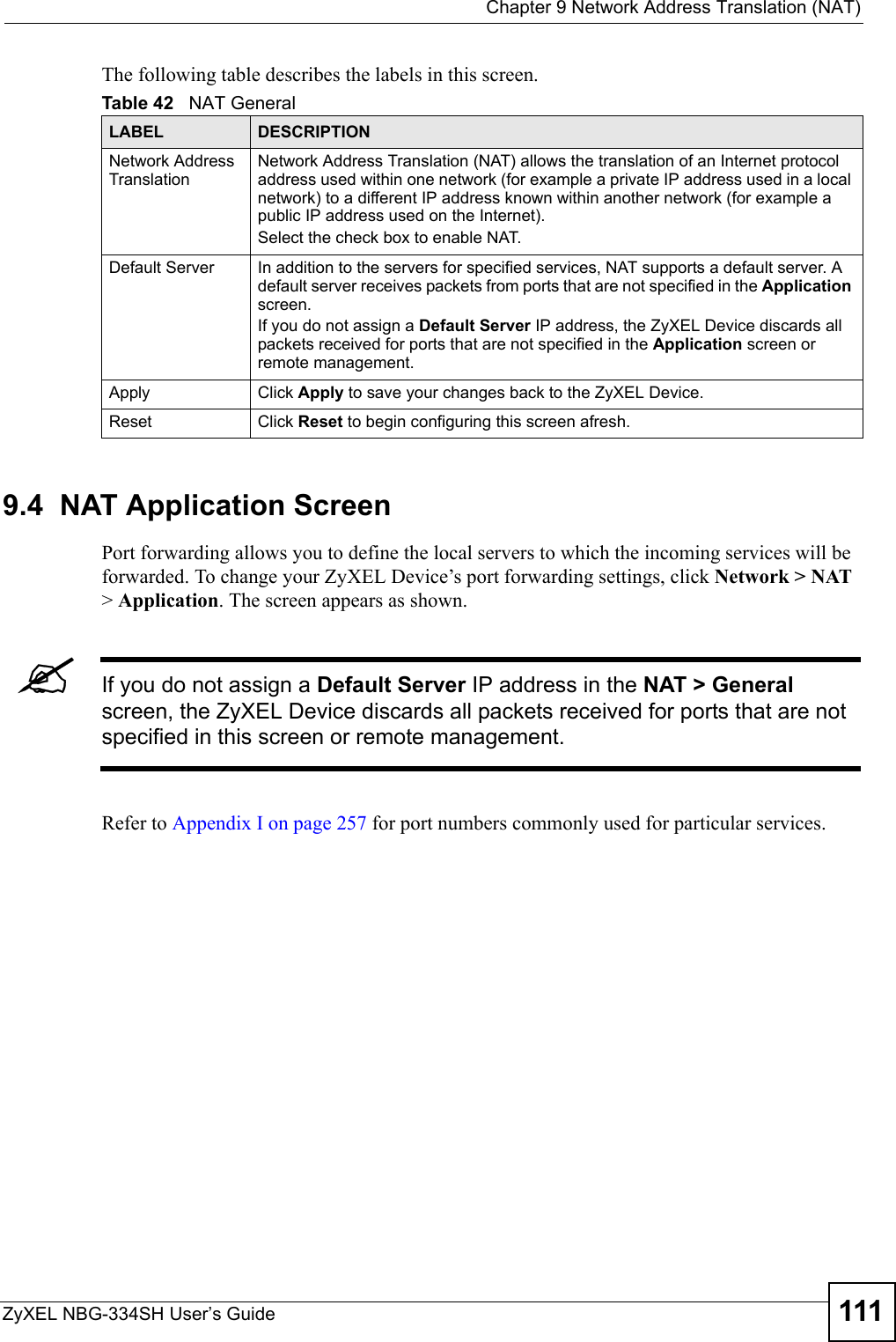
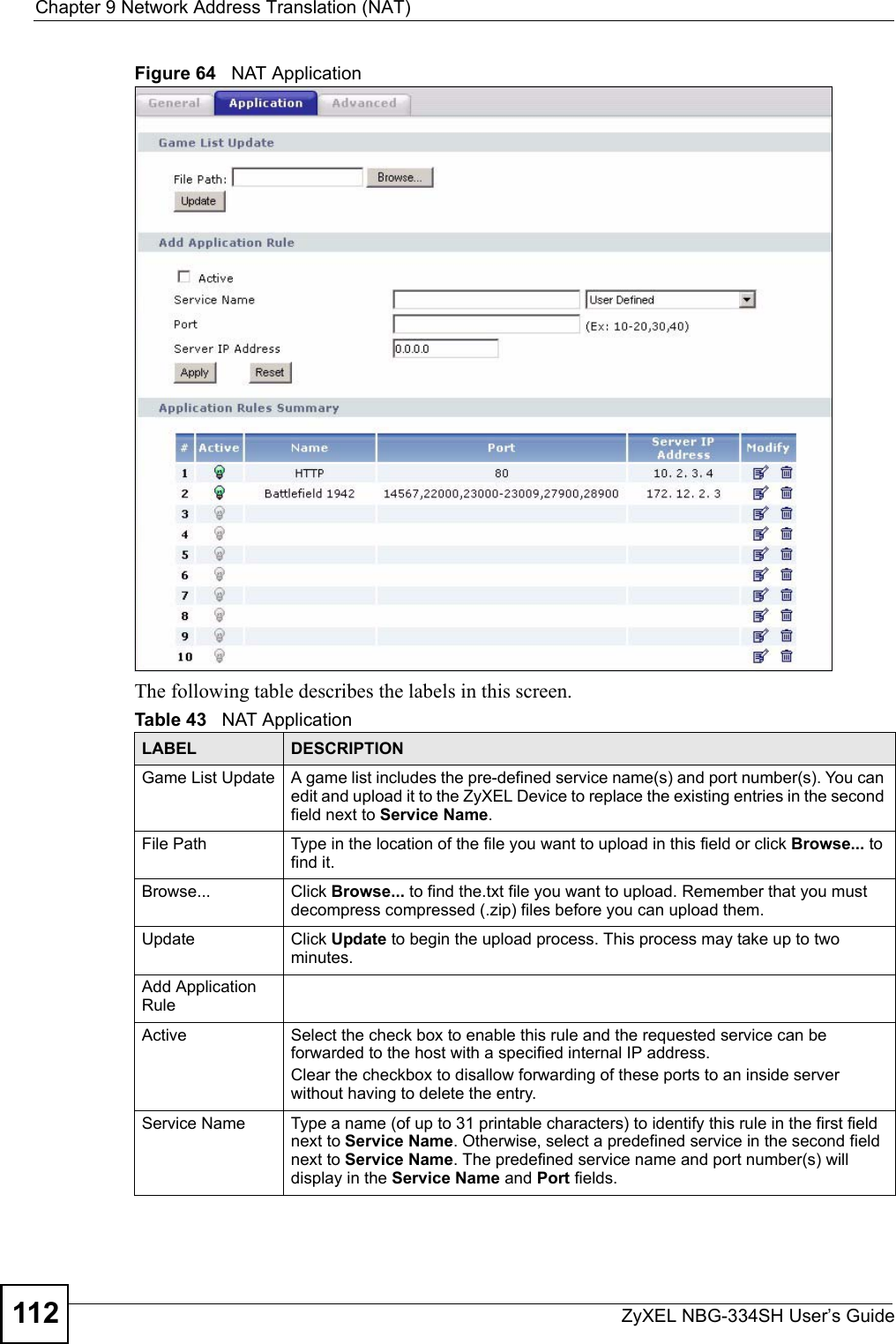
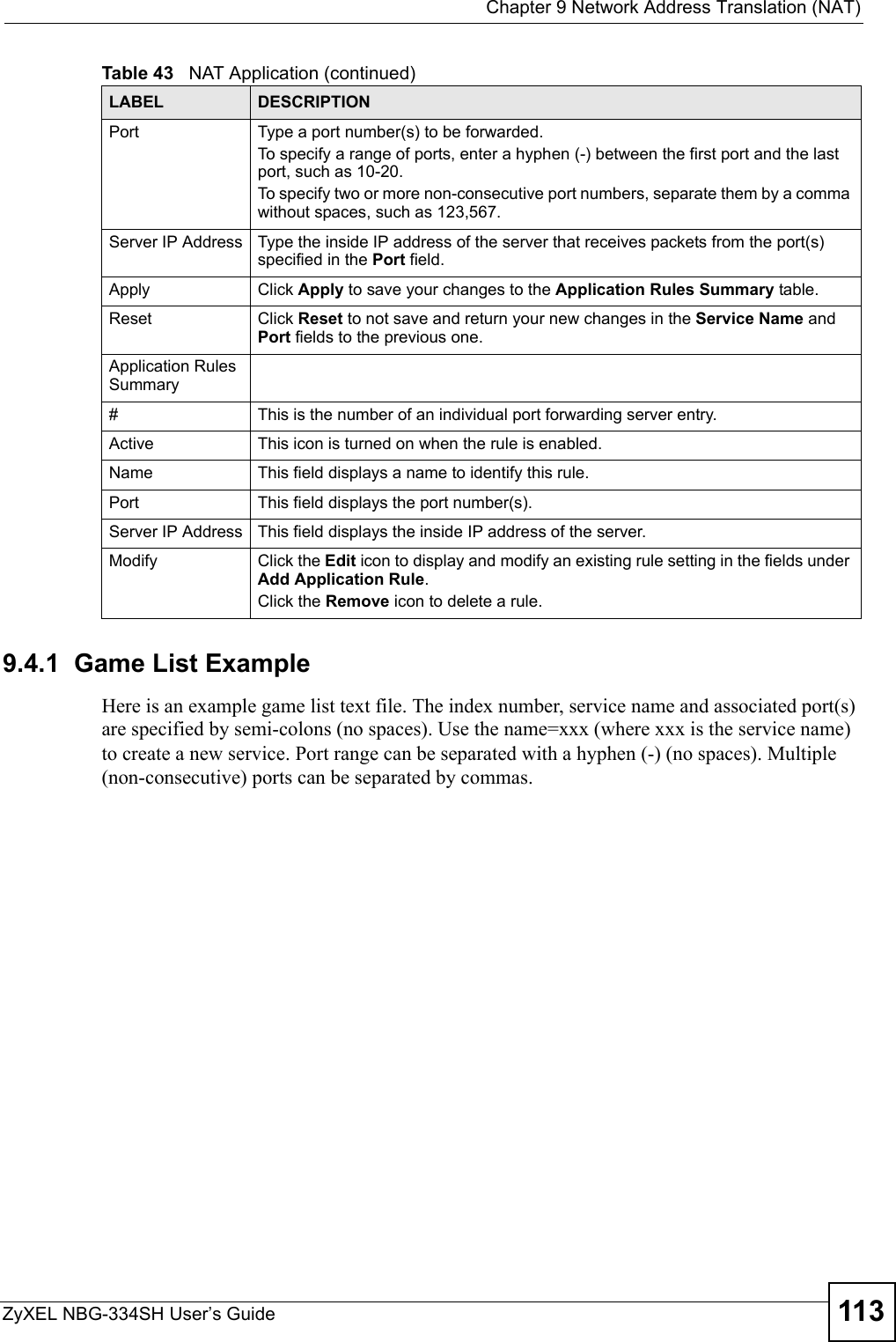
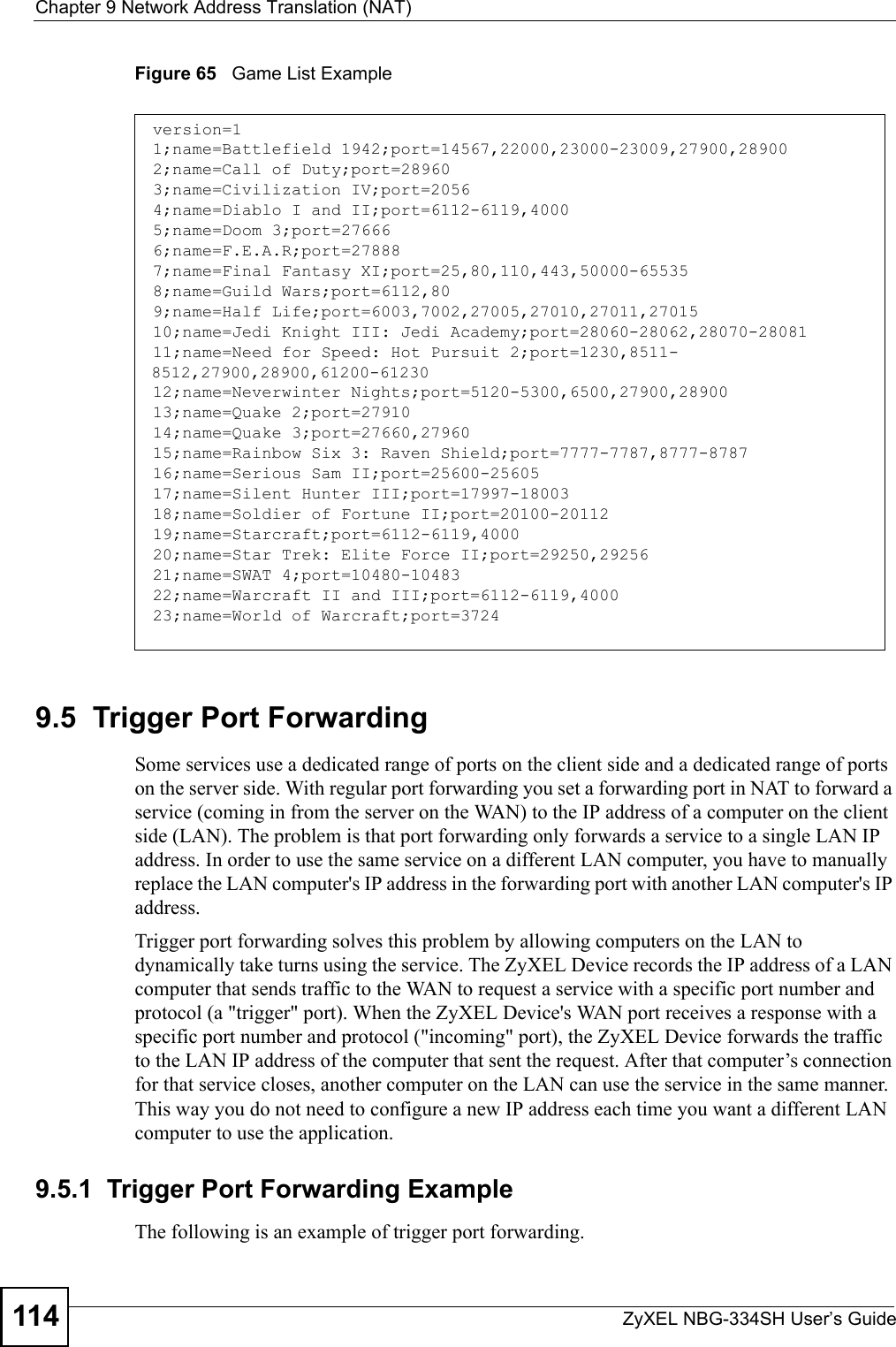
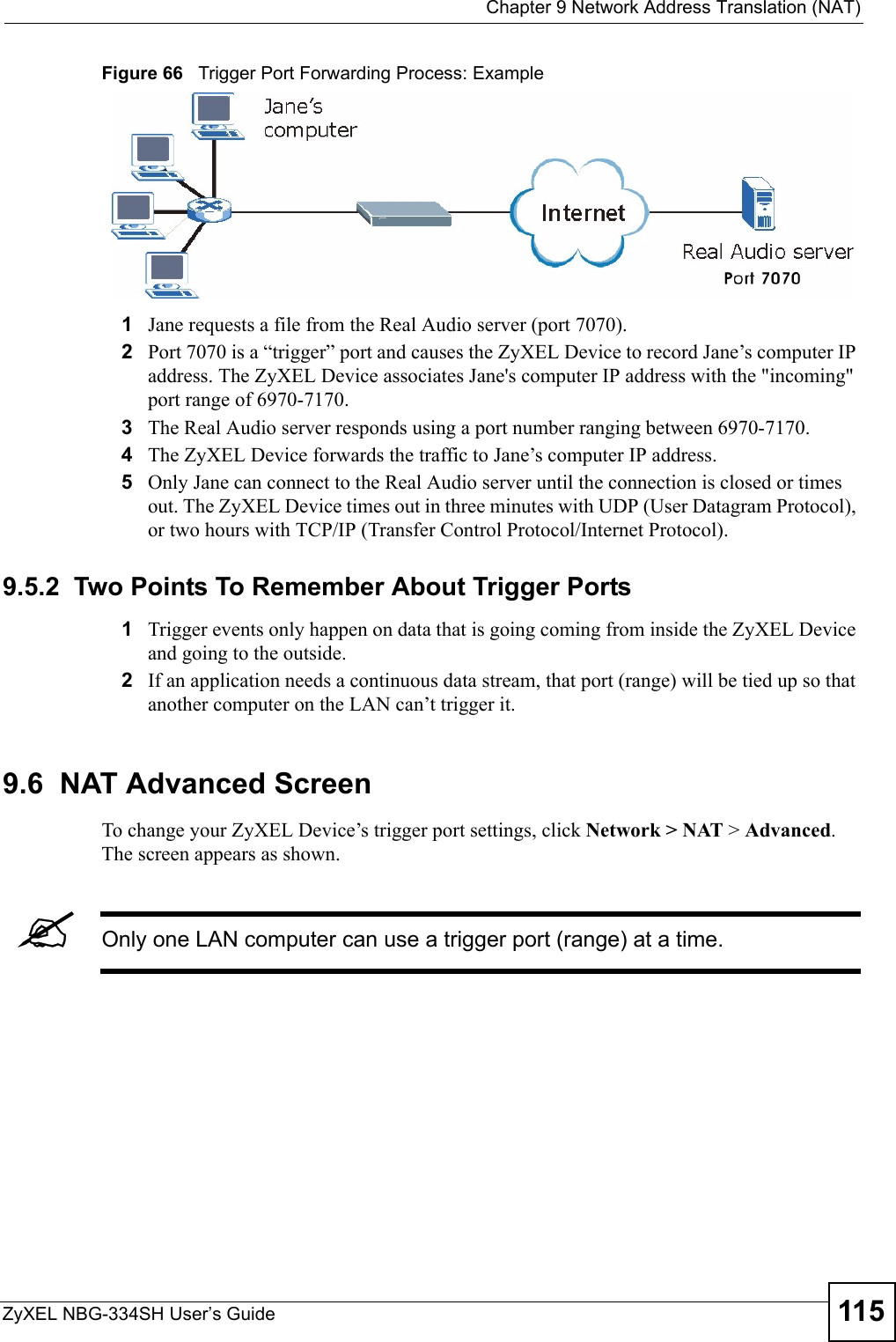
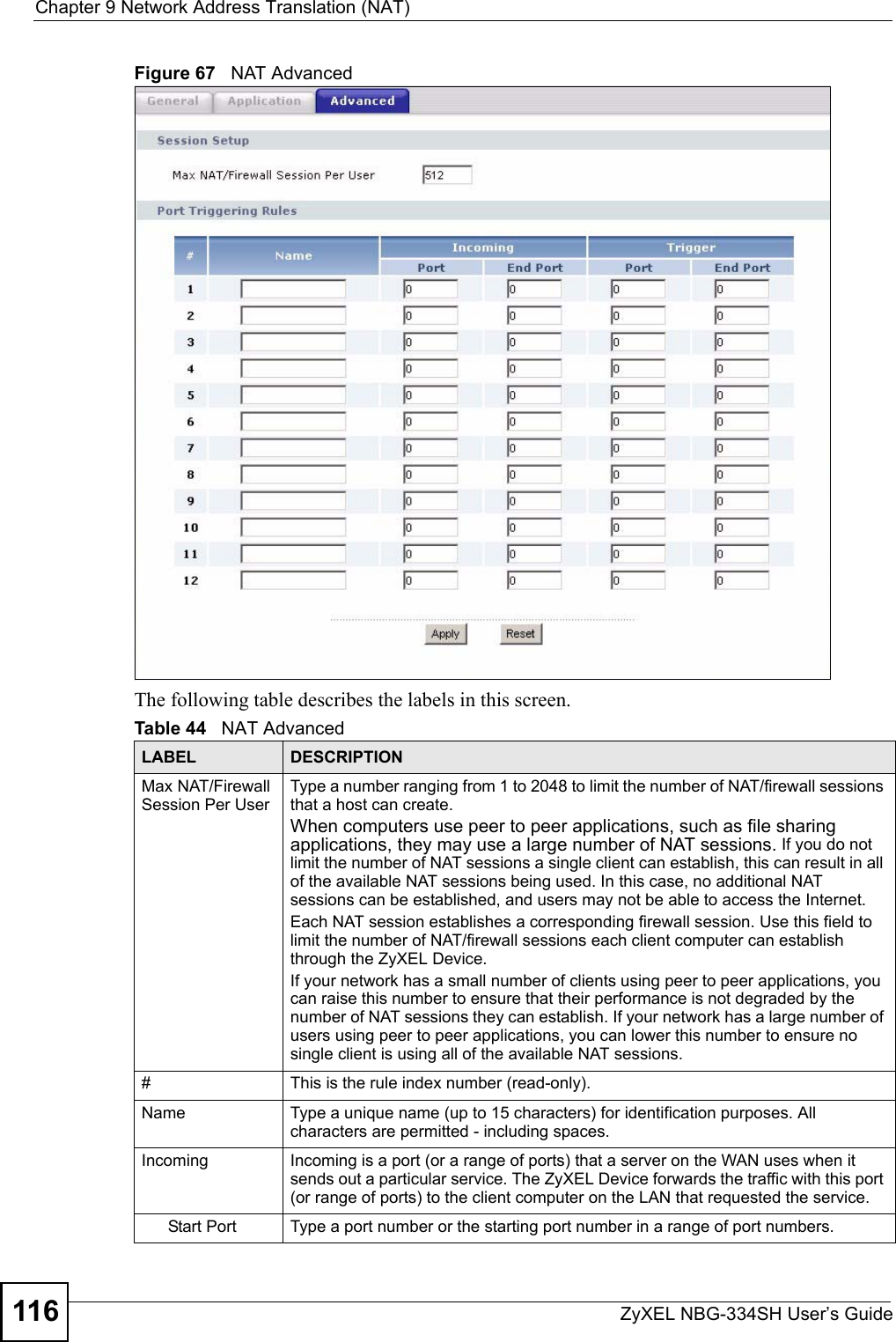
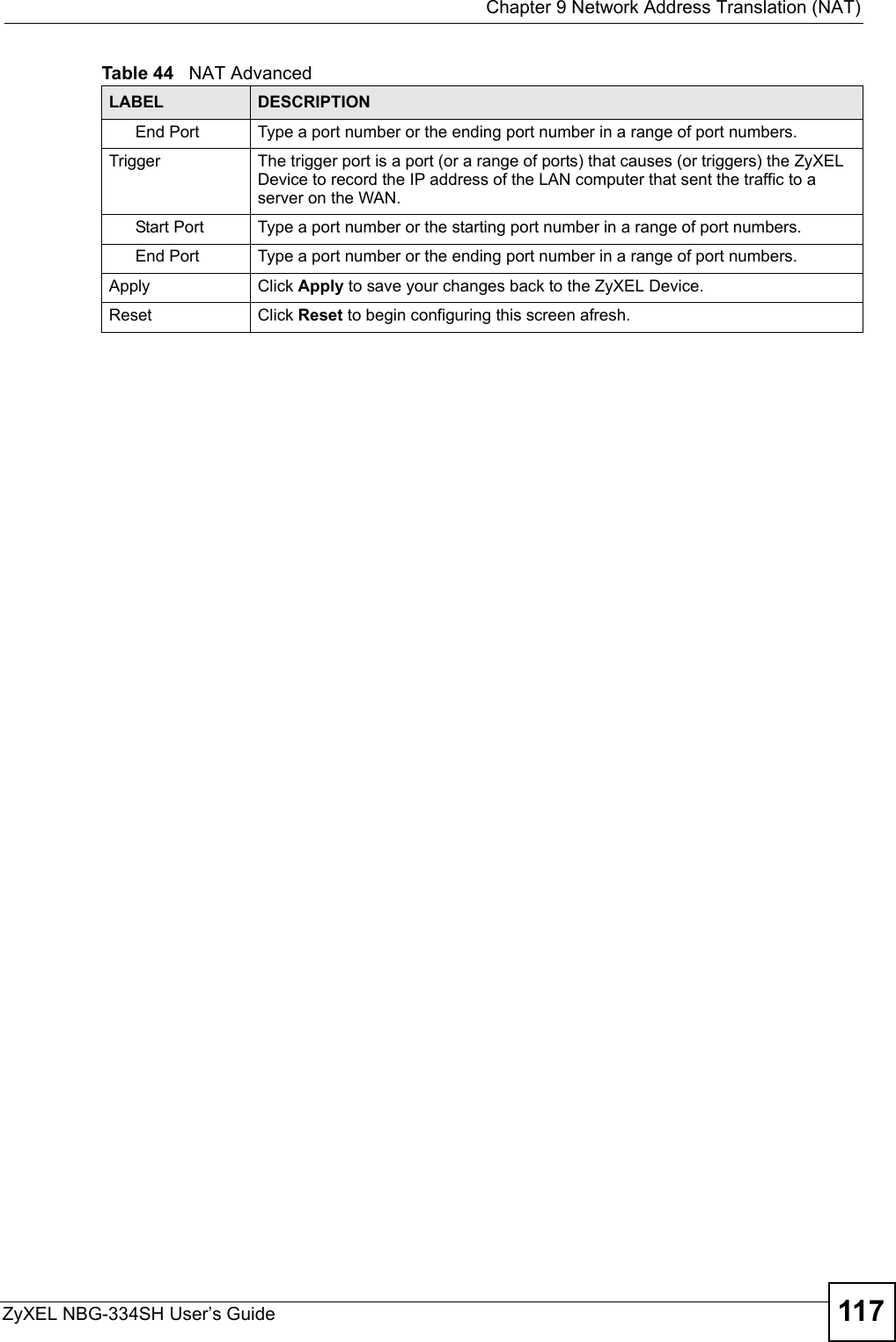
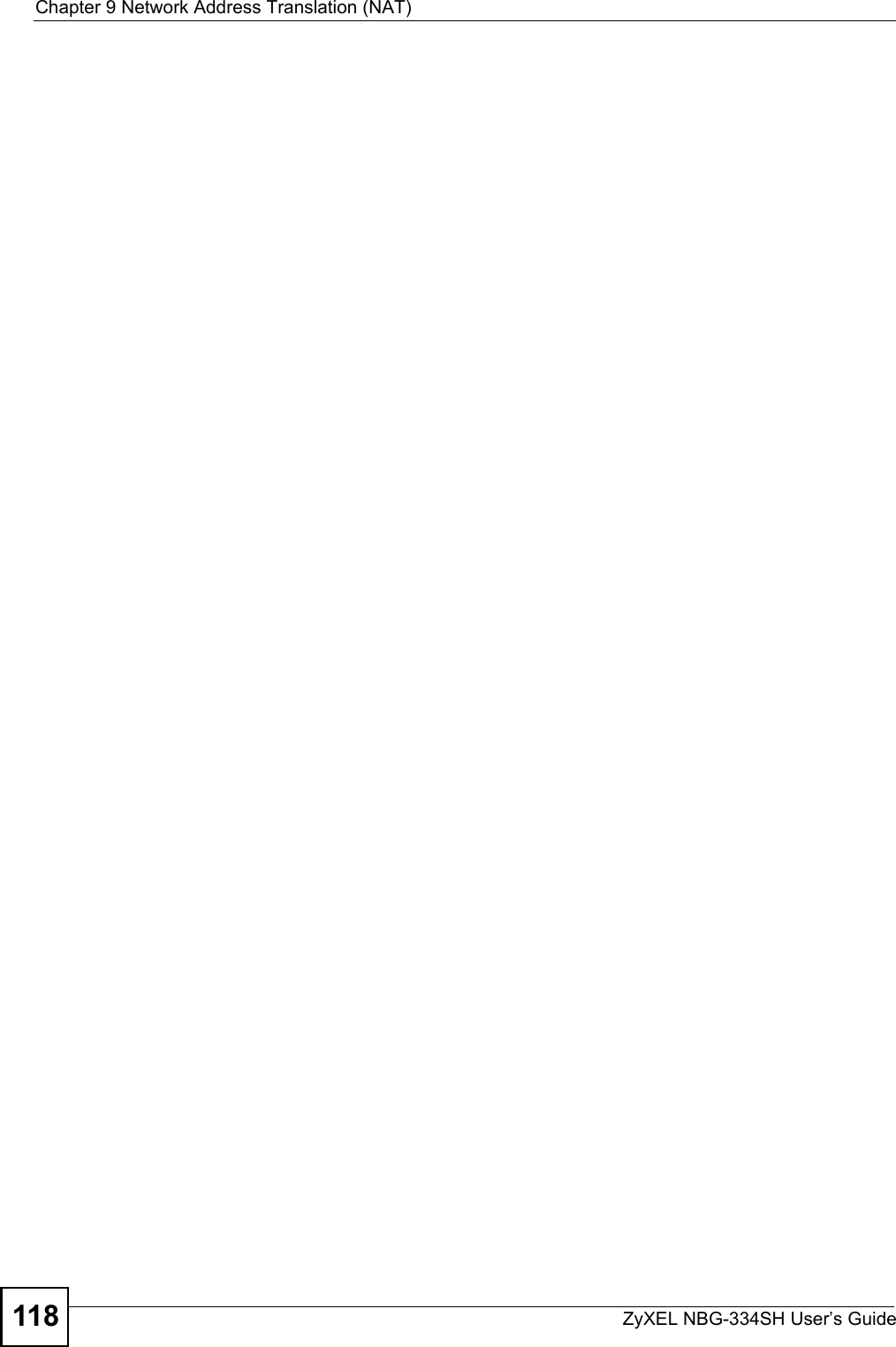
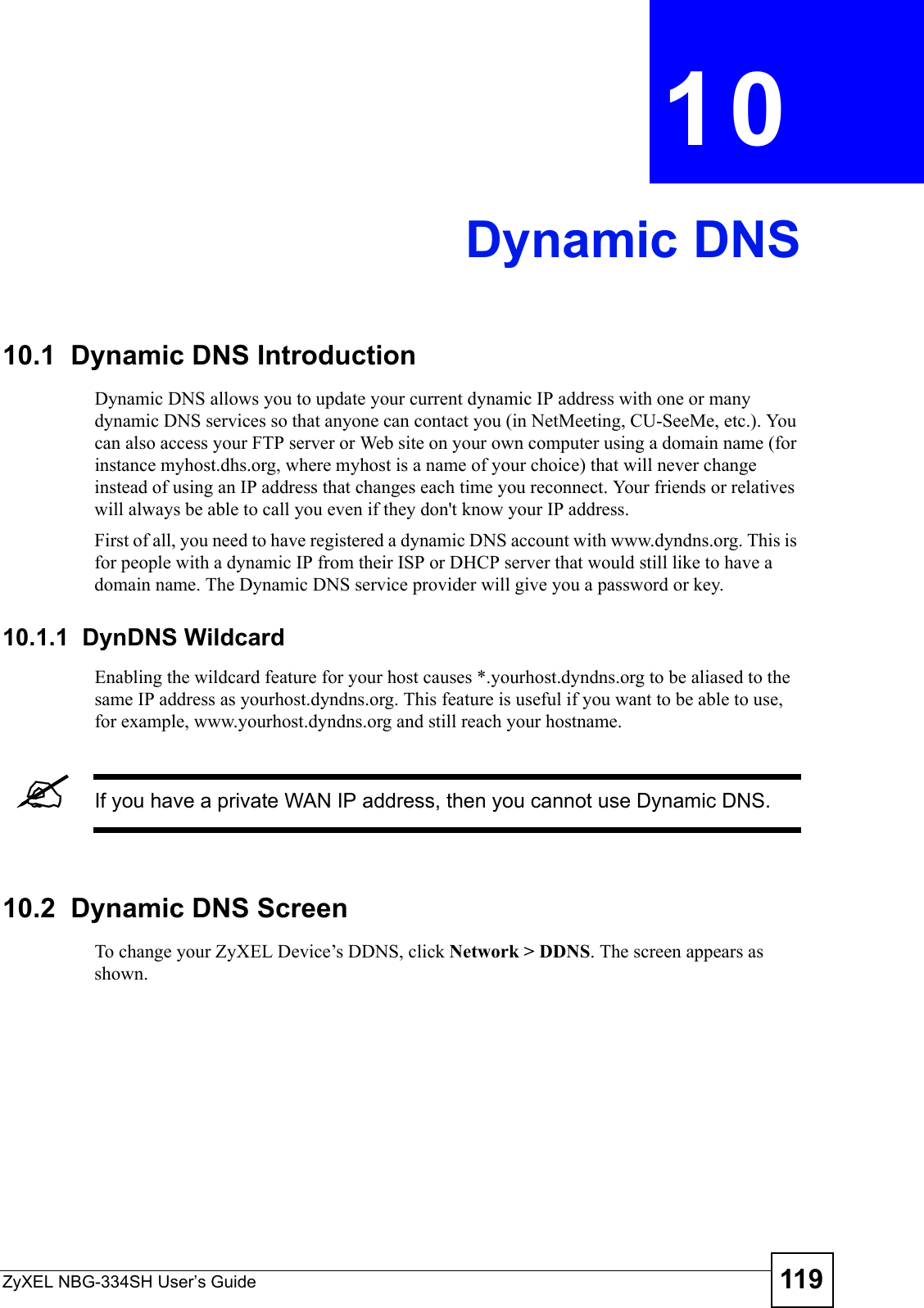
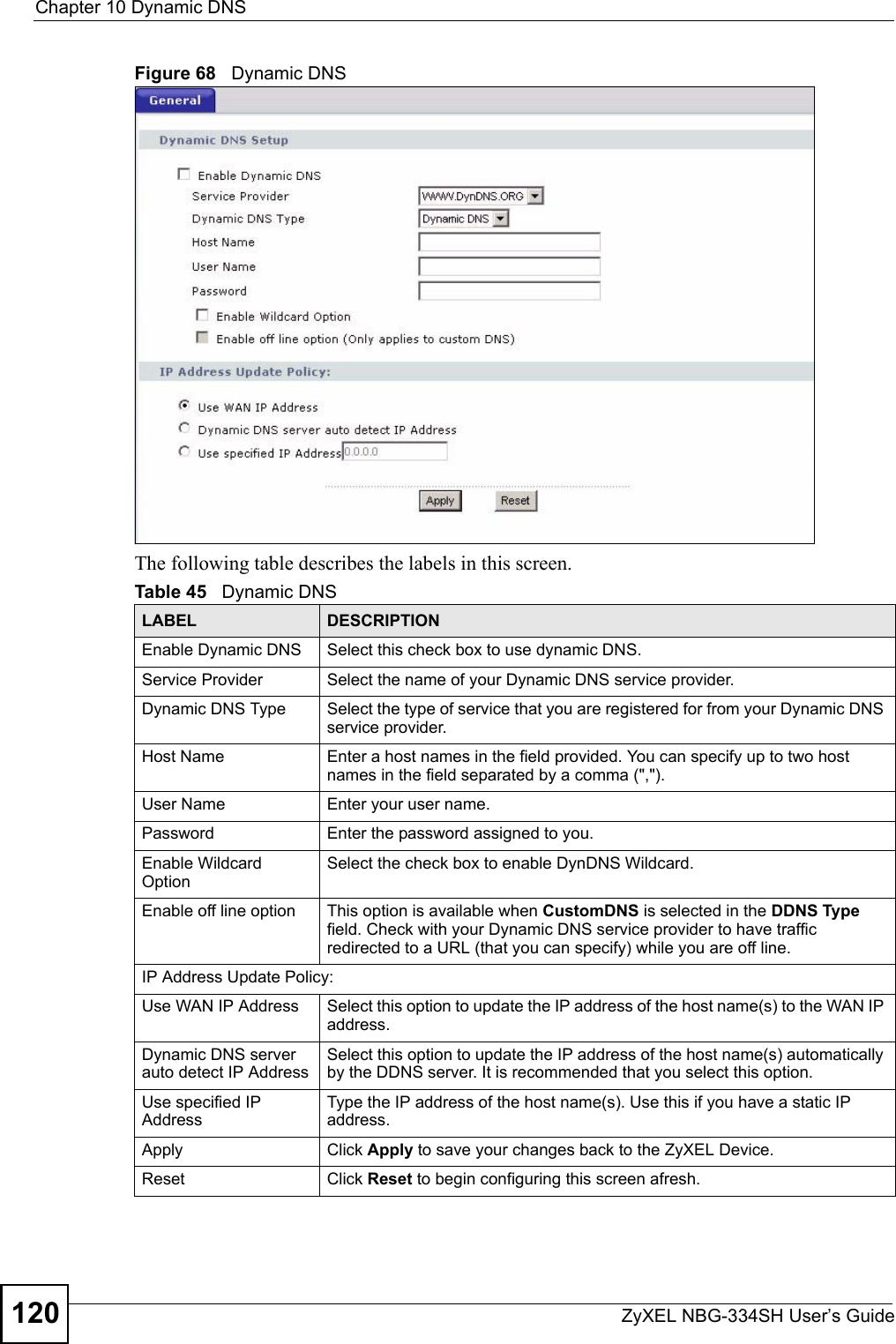
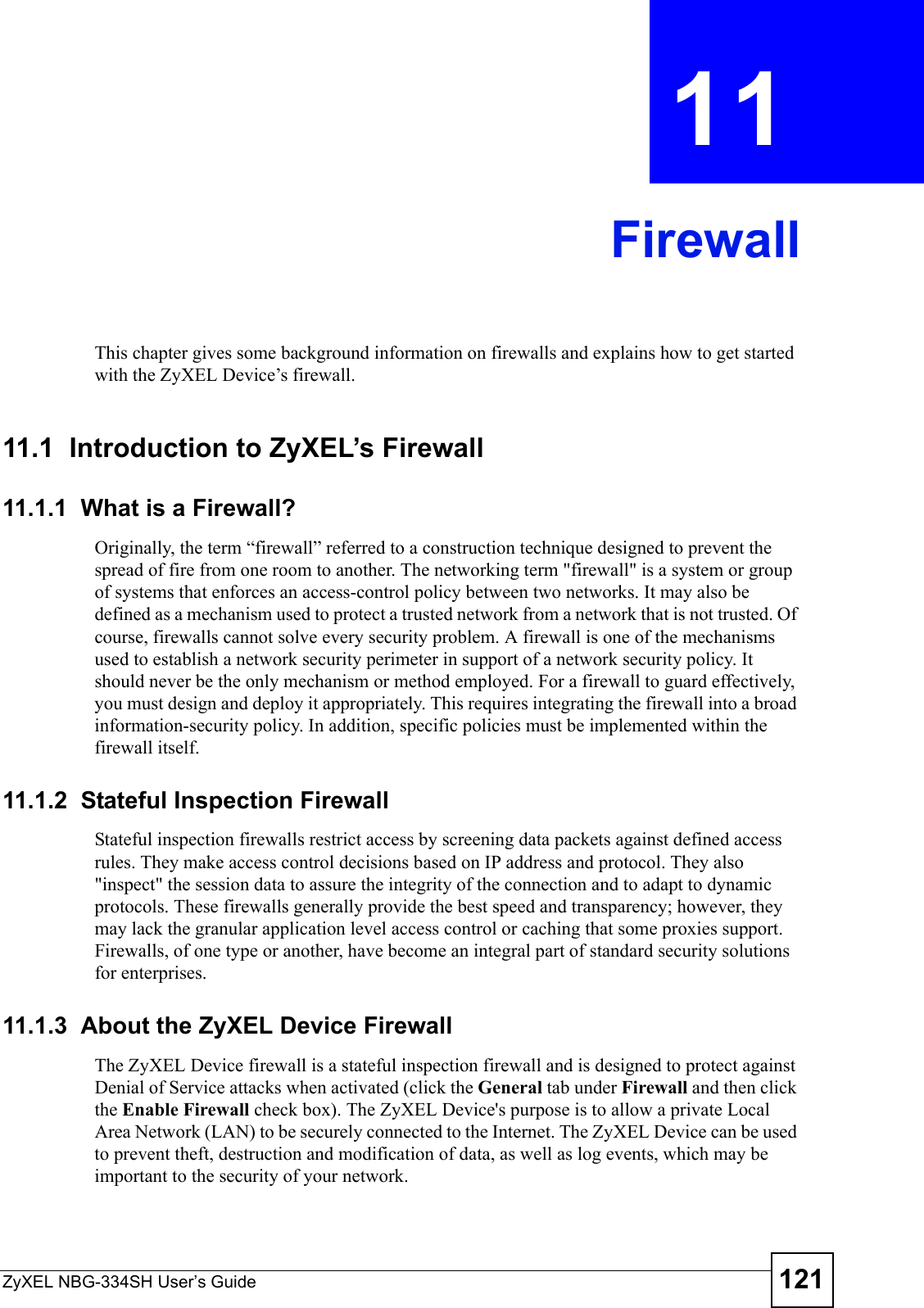
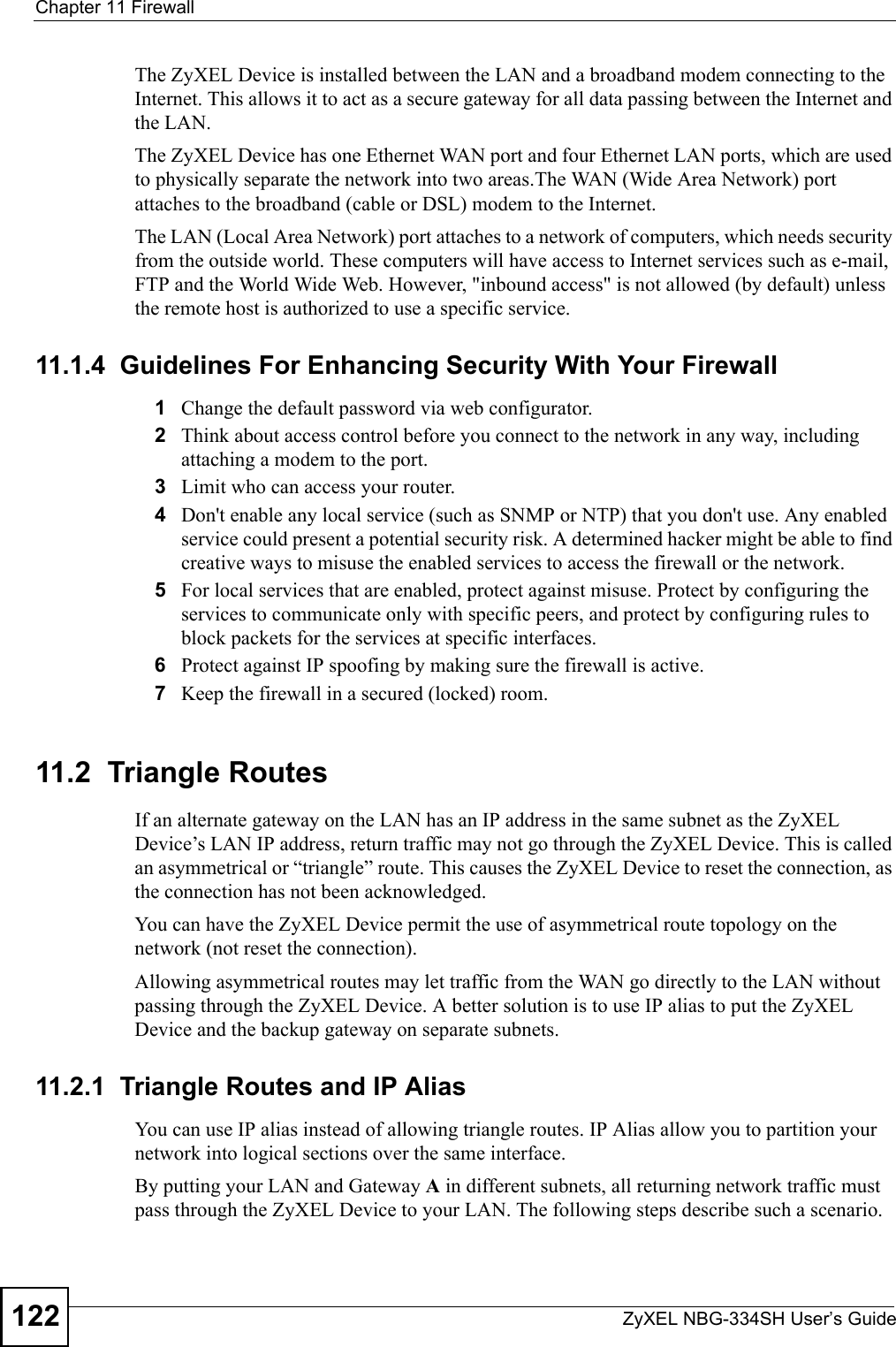
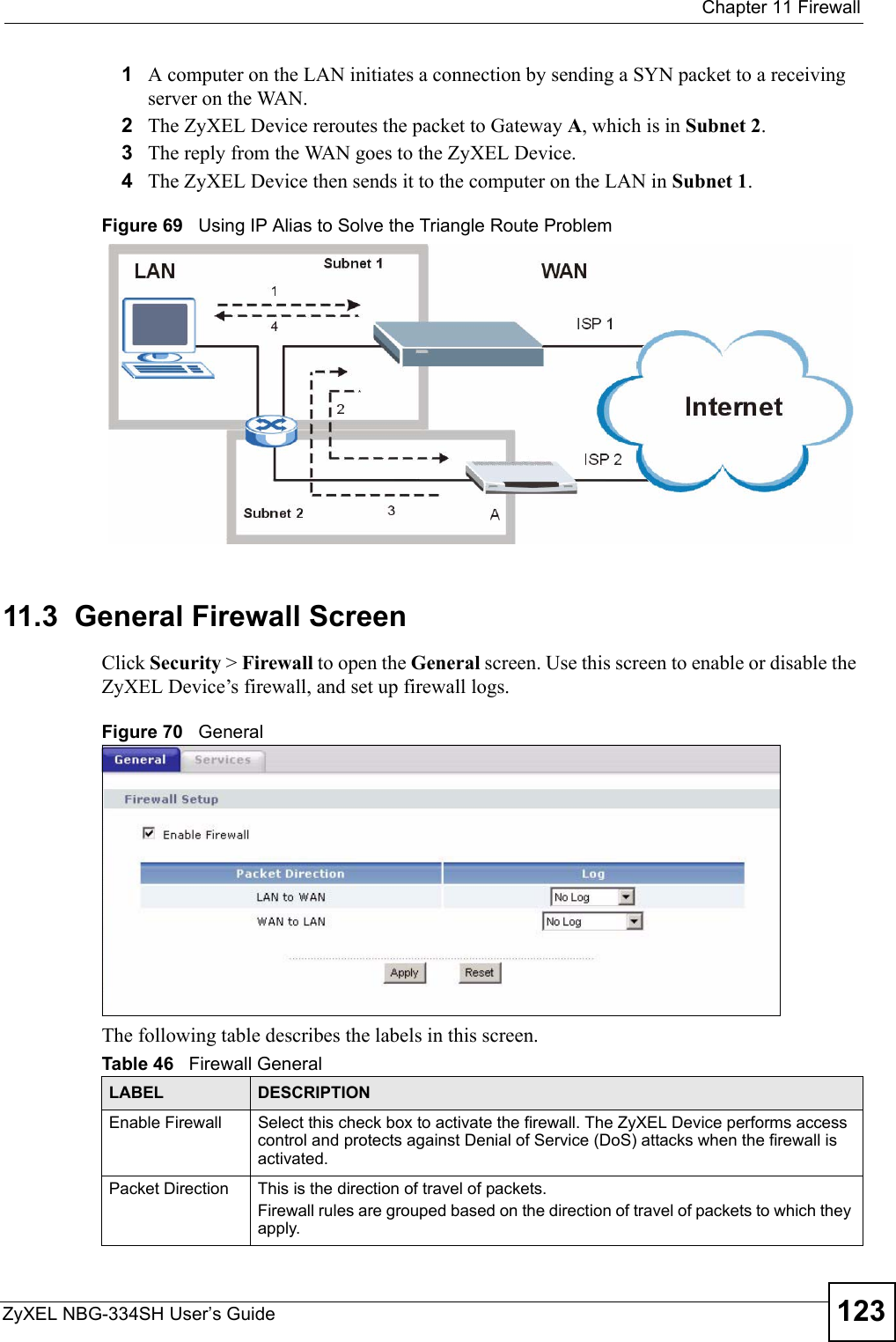
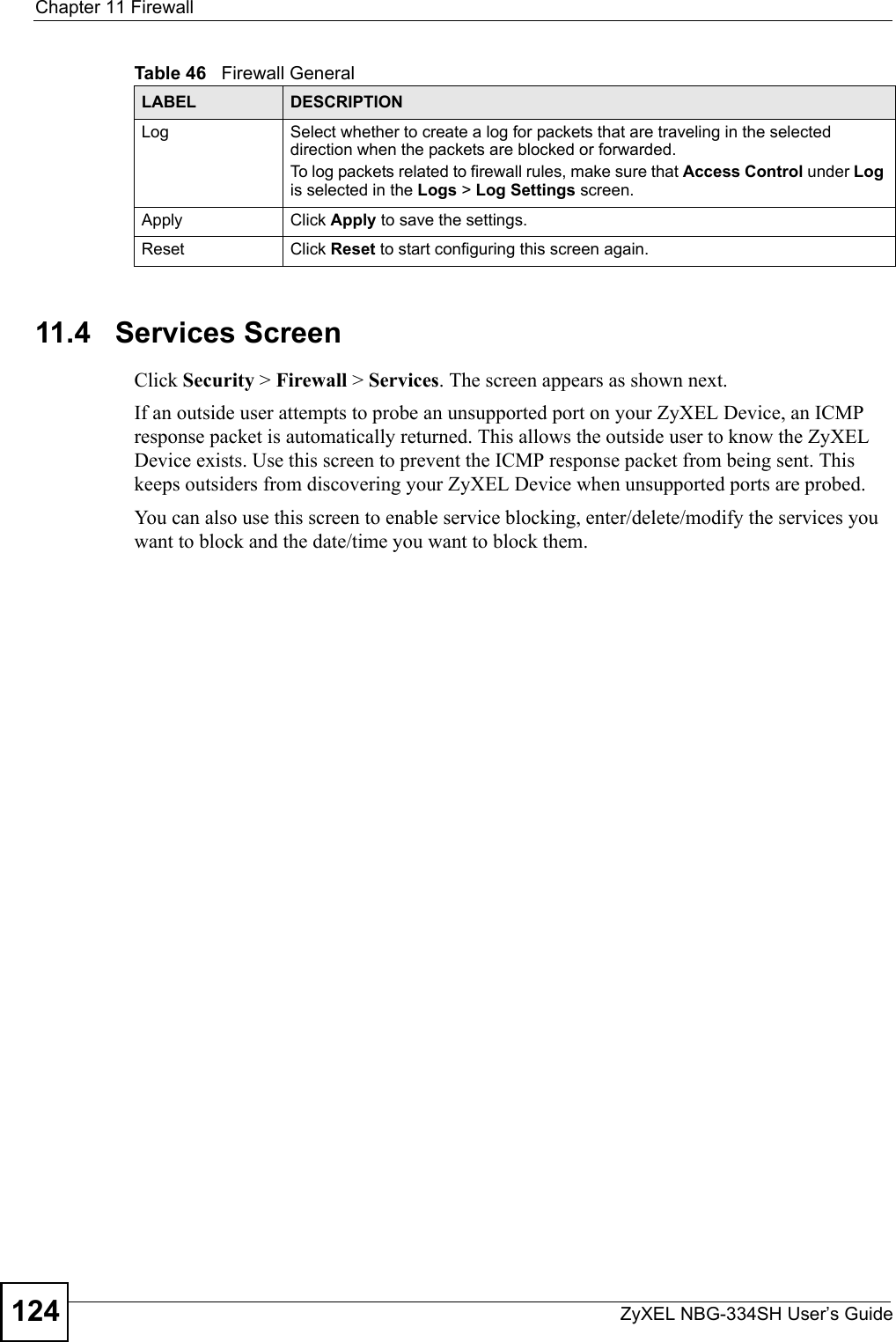
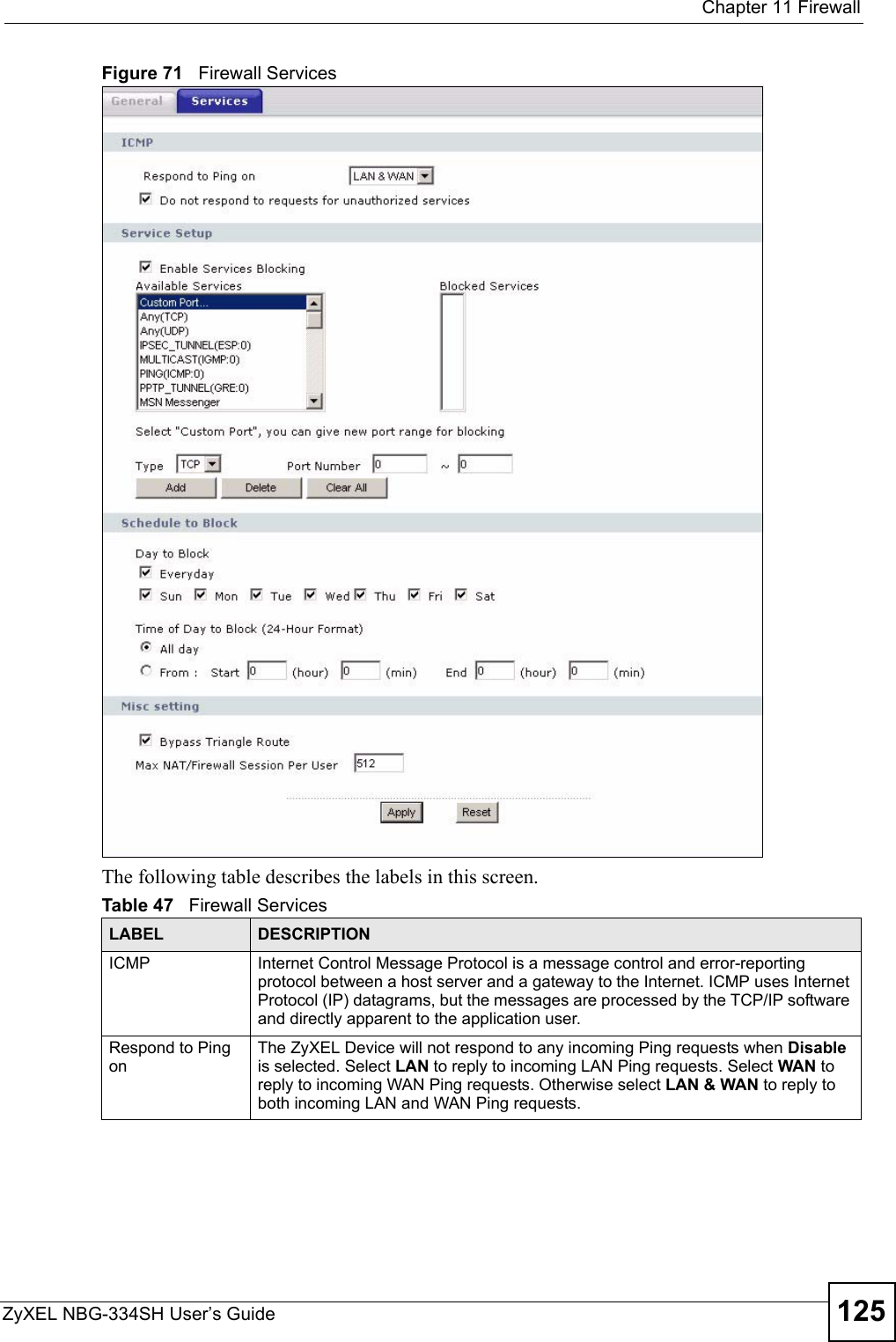
![Chapter 11 FirewallZyXEL NBG-334SH User’s Guide126Do not respond to requests for unauthorized servicesSelect this option to prevent hackers from finding the ZyXEL Device by probing for unused ports. If you select this option, the ZyXEL Device will not respond to port request(s) for unused ports, thus leaving the unused ports and the ZyXEL Device unseen. By default this option is not selected and the ZyXEL Device will reply with an ICMP Port Unreachable packet for a port probe on its unused UDP ports, and a TCP Reset packet for a port probe on its unused TCP ports. Note that the probing packets must first traverse the ZyXEL Device's firewall mechanism before reaching this anti-probing mechanism. Therefore if the firewall mechanism blocks a probing packet, the ZyXEL Device reacts based on the firewall policy, which by default, is to send a TCP reset packet for a blocked TCP packet. You can use the command "sys firewall tcprst rst [on|off]" to change this policy. When the firewall mechanism blocks a UDP packet, it drops the packet without sending a response packet.Enable Services BlockingSelect this check box to enable this feature.Available ServicesThis is a list of pre-defined services (ports) you may prohibit your LAN computers from using. Select the port you want to block using the drop-down list and click Add to add the port to the Blocked Services field.Blocked Services This is a list of services (ports) that will be inaccessible to computers on your LAN once you enable service blocking. Custom Port A custom port is a service that is not available in the pre-defined Available Services list and you must define using the next two fields.Type Choose the IP port (TCP or UDP) that defines your customized port from the drop down list box.Port Number Enter the port number range that defines the service. For example, if you want to define the Gnutella service, then select TCP type and enter a port range from 6345 to 6349.Add Select a service from the Available Services drop-down list and then click Add to add a service to the Blocked ServicesDelete Select a service from the Blocked Services list and then click Delete to remove this service from the list.Clear All Click Clear All to empty the Blocked Services.Day to Block: Select a check box to configure which days of the week (or everyday) you want service blocking to be active. Time of Day to Block (24-Hour Format)Select the time of day you want service blocking to take effect. Configure blocking to take effect all day by selecting All Day. You can also configure specific times by selecting From and entering the start time in the Start (hour) and Start (min) fields and the end time in the End (hour) and End (min) fields. Enter times in 24-hour format, for example, "3:00pm" should be entered as "15:00".Bypass Triangle RouteSelect this check box to have the ZyXEL Device firewall ignore the use of triangle route topology on the network. Max NAT/Firewall Session Per UserType a number ranging from 1 to 2048 to limit the number of NAT/firewall sessions that a host can create.Apply Click Apply to save the settings. Reset Click Reset to start configuring this screen again. Table 47 Firewall ServicesLABEL DESCRIPTION](https://usermanual.wiki/ZyXEL-Communications/NBG334SH1.users-manual-pt2/User-Guide-811557-Page-26.png)
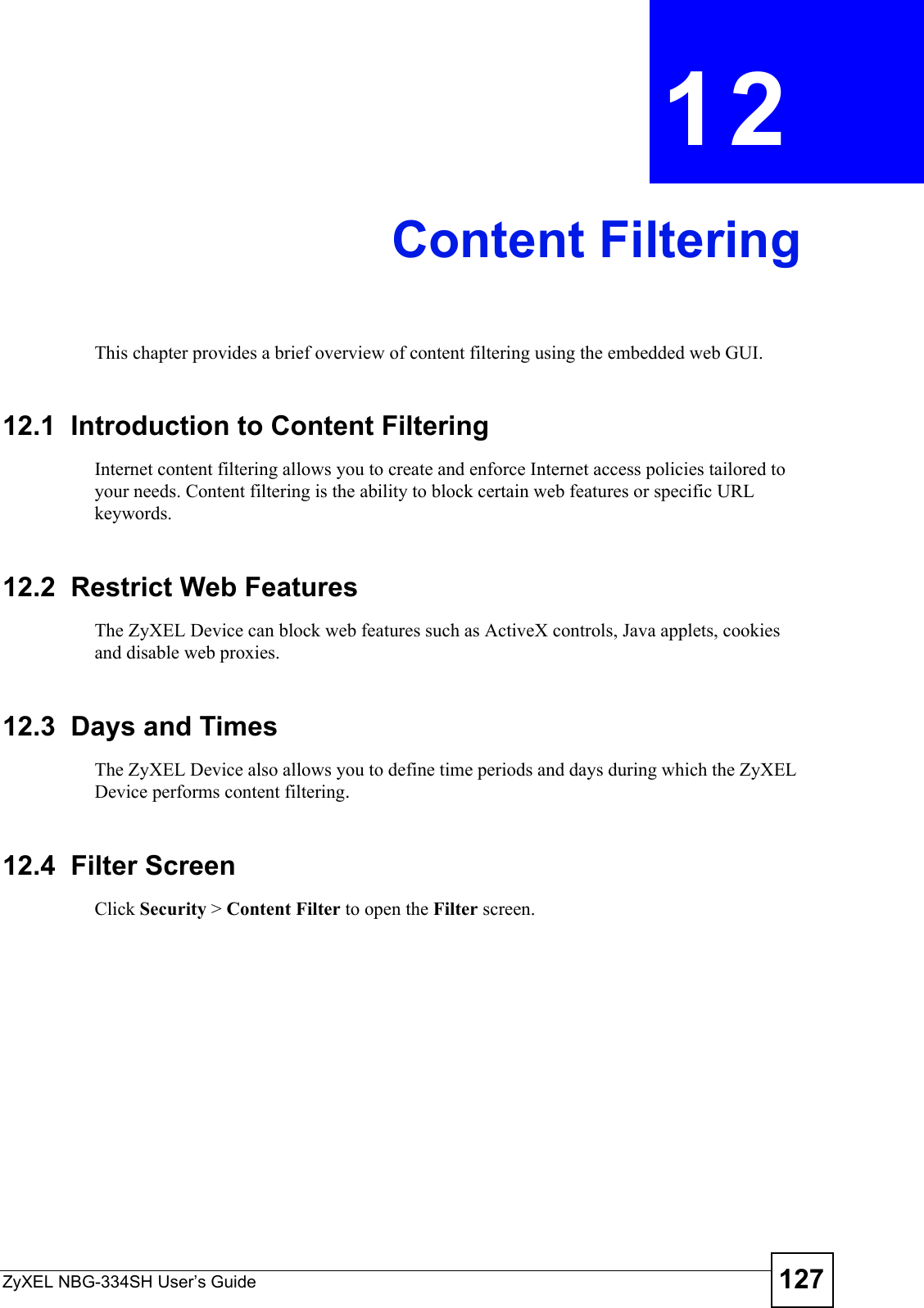
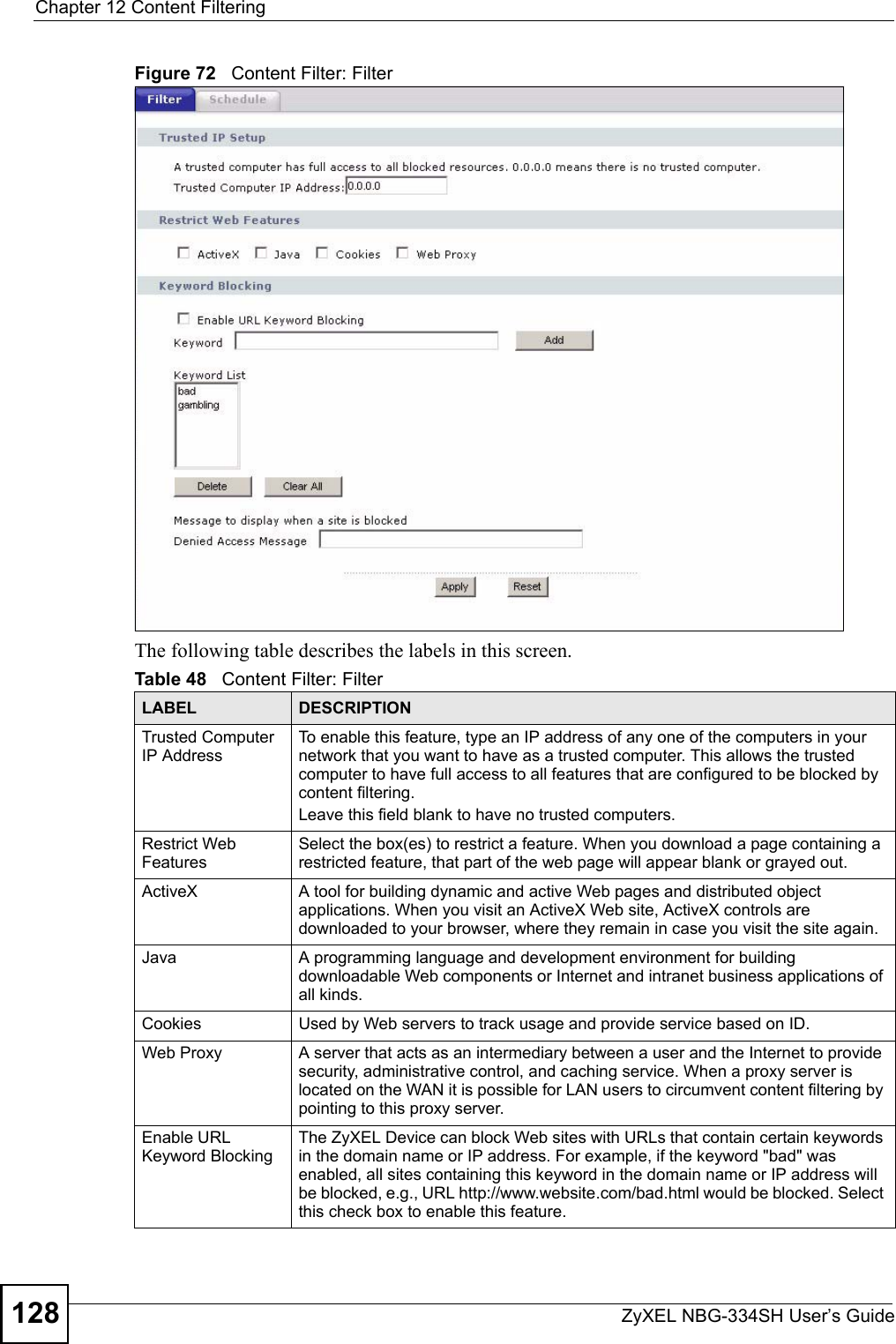
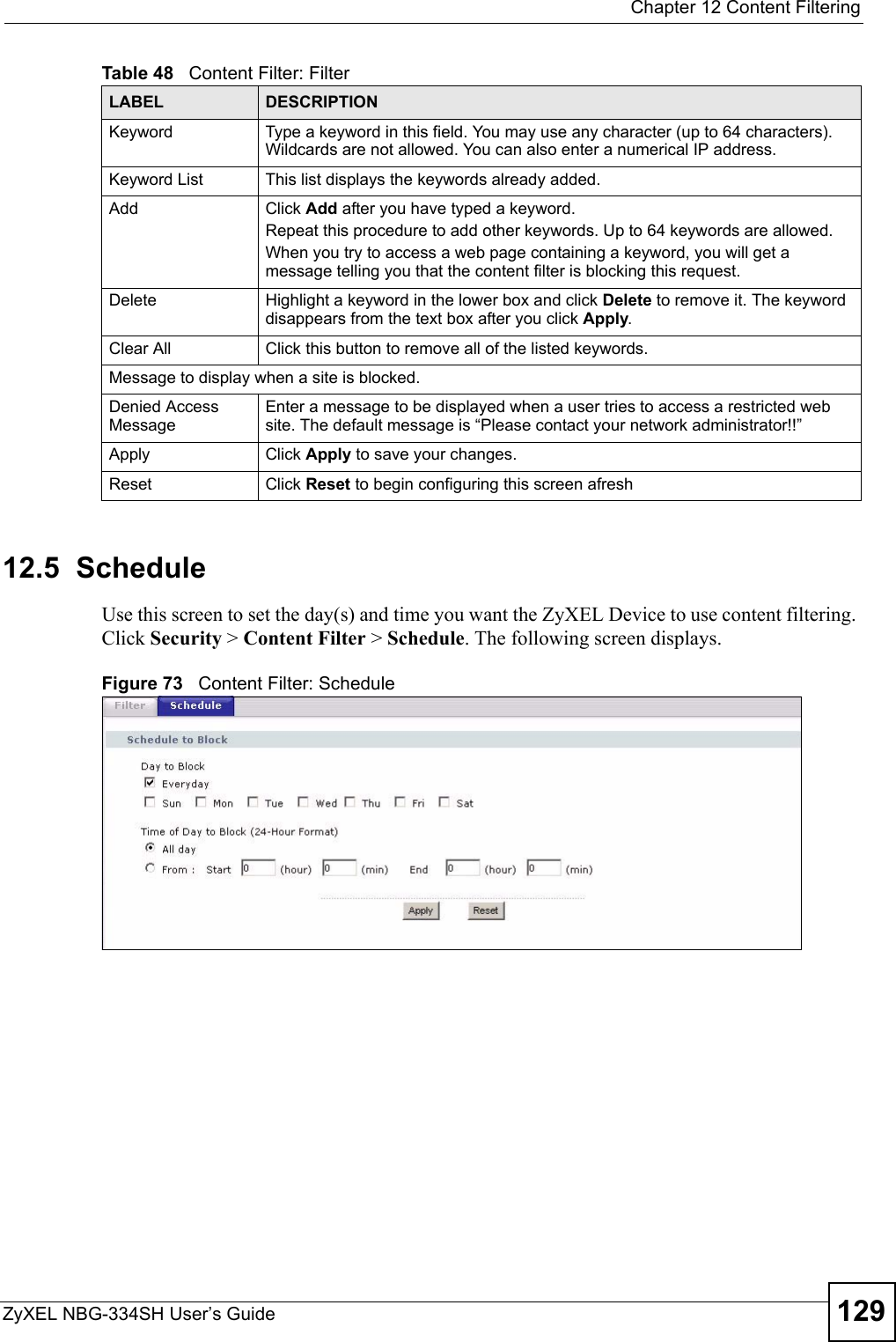
![Chapter 12 Content FilteringZyXEL NBG-334SH User’s Guide130The following table describes the labels in this screen.12.6 Customizing Keyword Blocking URL CheckingYou can use commands to set how much of a website’s URL the content filter is to check for keyword blocking. See the appendices for information on how to access and use the command interpreter.12.6.1 Domain Name or IP Address URL CheckingBy default, the ZyXEL Device checks the URL’s domain name or IP address when performing keyword blocking.This means that the ZyXEL Device checks the characters that come before the first slash in the URL.For example, with the URL www.zyxel.com.tw/news/pressroom.php, content filtering only searches for keywords within www.zyxel.com.tw.12.6.2 Full Path URL CheckingFull path URL checking has the ZyXEL Device check the characters that come before the last slash in the URL.For example, with the URL www.zyxel.com.tw/news/pressroom.php, full path URL checking searches for keywords within www.zyxel.com.tw/news/.Use the ip urlfilter customize actionFlags 6 [disable | enable] command to extend (or not extend) the keyword blocking search to include the URL's full path.12.6.3 File Name URL CheckingFilename URL checking has the ZyXEL Device check all of the characters in the URL.Table 49 Content Filter: ScheduleLABEL DESCRIPTIONDay to Block Select check boxes for the days that you want the ZyXEL Device to perform content filtering. Select the Everyday check box to have content filtering turned on all days of the week.Time of Day to Block (24-Hour Format)Time of Day to Block allows the administrator to define during which time periods content filtering is enabled. Time of Day to Block restrictions only apply to the keywords (see above). Restrict web server data, such as ActiveX, Java, Cookies and Web Proxy are not affected.Select All Day to have content filtering always active on the days selected in Day to Block with time of day limitations not enforced.Select From and enter the time period, in 24-hour format, during which content filtering will be enforced. Apply Click Apply to save your customized settings and exit this screen.Reset Click Reset to begin configuring this screen afresh](https://usermanual.wiki/ZyXEL-Communications/NBG334SH1.users-manual-pt2/User-Guide-811557-Page-30.png)
![Chapter 12 Content FilteringZyXEL NBG-334SH User’s Guide 131For example, filename URL checking searches for keywords within the URL www.zyxel.com.tw/news/pressroom.php.Use the ip urlfilter customize actionFlags 8 [disable | enable] command to extend (or not extend) the keyword blocking search to include the URL's complete filename.](https://usermanual.wiki/ZyXEL-Communications/NBG334SH1.users-manual-pt2/User-Guide-811557-Page-31.png)

